
How Fast Do Catamarans Go?

Last Updated by
Daniel Wade
August 30, 2022
Catamarans are known for their speed, and some vessels are fast enough to break world sailing speed records.
Catamarans can go between 15 and 30 knots, with the fastest achieving speeds well in excess of 60 knots. Sailing catamarans are sometimes twice as fast as monohulls and cut through the water with greater efficiency.
In this article, we’ll cover how fast catamarans can go based on factors such as size, sail area, and design category. Additionally, we’ll compare catamaran speeds to monohulls and trimarans and cover the reasons why multi-hull sailboats blow monohulls out of the water.
We sourced the information used in this article from sailing guides and hull speed calculations. Additionally, we sourced information directly from the manufacturers of common catamarans.
Table of contents

Catamaran Speed by Type
Catamaran design can be split into different categories. After all, different vessels are designed for different tasks, as speed isn’t always the most important design consideration.
The fastest type of catamaran is the ultralight racing catamaran. These vessels have extremely narrow hulls and a remarkable planing ability. They’re designed to pierce waves and often achieve speeds in excess of 45 knots or greater, depending on conditions.
The second fastest catamaran variety is the sport catamaran. Sport catamarans often include a fairly good level of creature comforts in the cabin. They’re technically hybrid designs, because they are envisioned as a combination between a racer and a cruiser. Sport catamarans can achieve 30 knots or greater.
Cruising catamarans are designed primarily for safety and comfort. They’re often used for long offshore passages, where speed is important, but comfort is king. Despite their accommodations, cruising catamarans can still achieve a respectable 15 to 20 knots of speed—sometimes 50% faster than similarly-equipped monohulls.
Why are Catamarans So Fast?
Catamarans are remarkable vessels that can achieve amazing speeds. As a result of their unconventional design, typical calculations for hull speed (such as those used for monohulls) don’t always apply.
But what makes catamarans so much faster than equivalent monohulls? The first and most obvious speedy design element are the hulls themselves.
Catamarans don’t have a deep keel or a centerboard. This is because the second hull acts as a stabilizing device, and it helps the vessel track straight. The lack of a keel reduces weight (and equally important). It also reduces drag.
Additionally, catamarans behave in strange ways while underway. The hulls have a tendency to rise out of the water further the faster they go. This further reduces drag and makes it easier for the vessel’s speed to climb once it starts to move.
One additional characteristic is how the vessel’s sails point relative to the wind. Catamarans keep their sails perpendicular to the wind, which allows them to harness energy more efficiently. This is because, at a perpendicular angle, less wind energy is lost by spillage over the edge of the sails.
Are Catamarans Faster than Monohulls?
Yes, catamarans are typically faster than monohulls. They’re also a lot more stable, as their spaced-out hulls provide better motion comfort in rough seas. Catamaran hulls are narrower than monohulls, which also reduces drag and increases speed.
Catamaran vs. Monohull Speeds
We know that catamarans are faster than monohulls in most situations. But how much faster are they? Here’s a table of hull speeds for monohulls, which is a useful reference when comparing speed. Hull speed isn’t the absolute fastest that a boat can go, but it’s a good practical estimate for understanding the hydrodynamic limitations of single-hull designs.
Hull speed calculations for catamarans are more complicated. This is because catamarans have a greater length-to-beam ratio. And due to their narrow hulls and open center, they aren’t affected by the same hydrodynamic drag forces that monohulls are limited by.
For example, a 55-foot monohull sailboat with a waterline length has a hull speed of 9.4 knots or 10.9 mph. Its actual speed could exceed that in the right conditions, but rarely by more than a few knots.
Compare that to an efficient 51-foot catamaran, which can easily achieve speeds in excess of 20 knots in reasonable winds. That’s more than double the hull speed of a monohull with a similar waterline length and proves that catamarans operate under a completely different set of rules.
Wave Piercing
One aspect of catamaran design that makes them superior speeders is their ability to pierce waves. Specially designed catamarans have minimal buoyancy at the bow, which allows them to slice through waves instead of going over them.
This increases the speed at which catamarans can cover the distance. Think about it—a boat going over a wave has to use more energy to reach the same destination, as the height of the wave almost makes the distance further.
It’s like walking over a hill or on flat ground—you’ll take more steps walking up and down the hill than in a straight flat line. Wave piercing catamarans enjoy better stability, and they ‘take the flat road’ to a greater extent than monohulls.
Do Catamarans Plane?
Planing is when a boat’s hull rises out of the water due to hydrodynamic lift. This increases speed and efficiency, as there’s less drag but sufficient contact for stability. It also reduces rolling, as the bow only contacts the taller portions of the waves.
Catamarans have planing characteristics, but they generally don’t plane as dramatically as powerboats. This is still worth noting, as catamarans are specifically designed to use the phenomenon of hydrodynamic lift to gain speed and efficiency.
You’ll visibly notice a catamaran’s hull rising out of the water as it increases in speed. Compare that to a displacement monohull design (such as a classical cruising sailboat with a deep keel), which won’t rise out of the water in any significant way.
Are Catamarans Faster than Trimarans?
A trimaran is a catamaran with an additional hull in the center. Trimarans are usually less common than catamarans, but they have some of the same design benefits as other multi-hull sailboats.
At first glance, it would seem logical that trimarans are slower than catamarans. After all, they have an extra hull in the center, which likely increases weight and drag. However, there are more important factors at play here.
Trimarans are almost universally faster than catamarans. This has to do with weight distribution. Trimarans center their weight over the middle hull, using the outer hulls primarily for stability. This allows them to reap the benefits of a catamaran while increasing the efficiency of the wind power it captures.
Fastest Catamarans
Catamarans are popular for racing. There are several world records held by catamarans and numerous production boats with especially impressive speed-to-size ratios. Here are a few of the fastest racing and production catamarans ever built.
Fastest Sailboat Ever—Vestas Sailrocket 2
The Vestas Sailrocket is a specialized racing boat designed only for speed. This incredible vessel is actually the fastest sailboat ever built—and no wonder it’s a catamaran. A monohull simply can’t achieve record-breaking speeds when put head-to-head with a lightweight multi-hull.
The vessel, which earned the world sailboat speed record in 2012, has a modest 150 to 235 square feet of sail. Nonetheless, it managed to achieve a remarkable top speed of 65.45 knots in only 25 knots of wind. That’s about 72 miles per hour—in a sailboat.
Soon, a team of Swiss engineers will release their own version designed to beat the 65-knot speed record. Their vessel, which is a hydrofoil, will attempt to hit an incredible target speed of about 80 knots.
Outremer Catamarans
But what about production catamarans? How do they stack up, and how fast can they go? French boat builder Outremer Catamarans builds some of the fastest production catamarans ever built. These are not specialty racing boats—in fact, they’re average-sized cruising catamarans.
Let’s use the larger Outremer 51 as an example. This high-end cruising cat is known for its almost outrageous speed capabilities. In ideal conditions, owners of the Outremer 51 have reported speeds exceeding 20 knots for extended periods.
That’s a production catamaran with speeds that rival 20th-century warships. With such a fast boat, the world’s oceans start to appear a lot smaller. Plus, the genius design of the Outremer 51 allows it to be crewed by just two people.
But how do Outremer catamarans achieve such high speeds? The secret is in precise engineering and hull design, along with a sail plan that’s perfectly catered to the vessel. The hulls are sleek and narrow and designed to cut through the water with minimal drag.
From the bow, the Outremer 51 hulls look paper-thin. They increase in width gradually, which eliminates areas of sudden drag. These narrow hulls evenly distribute the vessel’s 21,825-lb displacement. Its low-buoyancy bows reduce drag and blast through waves instead of riding over them.
Related Articles
I've personally had thousands of questions about sailing and sailboats over the years. As I learn and experience sailing, and the community, I share the answers that work and make sense to me, here on Life of Sailing.
by this author
Learn About Sailboats
Most Recent

What Does "Sailing By The Lee" Mean?
October 3, 2023

The Best Sailing Schools And Programs: Reviews & Ratings
September 26, 2023
Important Legal Info
Lifeofsailing.com is a participant in the Amazon Services LLC Associates Program, an affiliate advertising program designed to provide a means for sites to earn advertising fees by advertising and linking to Amazon. This site also participates in other affiliate programs and is compensated for referring traffic and business to these companies.
Similar Posts

Affordable Sailboats You Can Build at Home
September 13, 2023

Best Small Sailboat Ornaments
September 12, 2023

Discover the Magic of Hydrofoil Sailboats
December 11, 2023
Popular Posts

Best Liveaboard Catamaran Sailboats
December 28, 2023

Can a Novice Sail Around the World?
Elizabeth O'Malley
June 15, 2022

4 Best Electric Outboard Motors

How Long Did It Take The Vikings To Sail To England?

10 Best Sailboat Brands (And Why)
December 20, 2023

7 Best Places To Liveaboard A Sailboat
Get the best sailing content.
Top Rated Posts
Lifeofsailing.com is a participant in the Amazon Services LLC Associates Program, an affiliate advertising program designed to provide a means for sites to earn advertising fees by advertising and linking to Amazon. This site also participates in other affiliate programs and is compensated for referring traffic and business to these companies. (866) 342-SAIL
© 2024 Life of Sailing Email: [email protected] Address: 11816 Inwood Rd #3024 Dallas, TX 75244 Disclaimer Privacy Policy

How Fast Do Catamarans Go? 5 Examples (With Pictures)
A catamaran is generally more balanced on the water and can be faster than a multi-hull vessel.
Unless you compare them to foiling monohulls like the new America’s Cup boats that sail at over 50 knots, they are not recreational vessels.
In this article, we will look at how fast each type of catamaran will go.
Table of Contents
Here are the numbers before we dive into the details:
| Sport Catamarans | 30 knots |
| Cruising Catamarans | 15 knots |
| Racing Catamarans | 45 knots |
| Power Cruising Catamarans | 70 knots |
| Swath Catamarans | 30 knots |
Average Speed For Sailing Catamarans
Catamarans can vary in size from 14 ft to over 100 ft. Catamarans can come in a wide variety of design types.
Sailing Catamarans have been attempting to make advancements over their mono-hulled counterparts.
These advancements include:
- Foils that assist with lifting the vessel out of the water.
- Stability advancements.
- Racers that can maintain their speed while out in the ocean.
3 Different Types of Sailing Catamarans:
1) sport catamarans.

One type of sailing catamaran is a sport catamaran, which is otherwise known as recreational. These are typically supposed to have a small crew and launch and land on beaches.
Sport catamarans do not normally have living quarters and are ideal for day trips. Resorts or other rental services often use these.
These can also be used for racing.
Sport vessels have been known to travel over 30 knots but can speed over 40 knots in the proper conditions.
2) Cruising Catamarans

Another type of sailing catamaran is a cruising catamaran. These often come with complete living accommodations, so they sacrifice speed over their sportier counterparts.
They can average between 9 and 10 knots, depending on the conditions. The top speed is typically around 15 knots.
It would be best if you were careful with catamarans that have living quarters. The more you weigh it down, the less speed you will have.
3) Racing Catamarans

The final type of sailing catamaran is an ocean racing catamaran.
These boats are large and can reach over 100 feet in length.
The top speed of this type of catamaran is around 45 knots.
Because of the prize money for entering these in races, much research goes into their advancement.
Average Speed Of Power Catamarans
Catamarans with power motors fill a different type of boating category.
These are commonly used when speed and smoothness are favored over space or capacity.
Because of their stability, catamarans are good vessels for combating seasickness as well as transportation. We have a separate article here with all you should know about catamarans and (how to overcome) seasickness .
On a commercial level, these can be used for ferries for both people and vehicles. They are used for short term travel, often to or from islands.
Like sailing catamarans, there are a few types of power catamarans.
1) Power Cruising Catamarans

Similar to sailing cruising catamarans, they also have power cruising catamarans. These also have living quarters and are stable while out on the water. The speed of these vessels highly depends on the motors equipped and the size of the boat itself.
Like passenger transport or ferries, catamarans have a high speed of about 40 to 70 miles per hour.
These are made to travel at great speeds to allow their commuters the shortest possible ride to their destination.
The military also utilizes power catamarans. They use power catamarans to transport military cargo. These ships are ideal because of their speed, holding capacity, and ability to venture into shallow ports.
2) Swath Catamarans

They also have small-waterplane-area twin-hull vessels. These are called SWATHs.
These differ from the average catamaran because they also have submarine-like hulls that stay completely under the water.
Due to the hulls being submerged, they are not normally affected by waves. These are used most often in the ocean as research vessels. They can also be used for certain types of yachts. Because of their stability, they are good vessels for furniture that will not require as much securing.
These often travel between 20 and 30 knots.
Some catamarans are designed for wave piercing. These are made to pierce through waves rather than sail over them, causing them to be faster. These can be used as passenger ferries, yachts, and military vessels as well.
3) Whitewater Catamarans

There are also recreational catamarans made for whitewater travel. These are sometimes called “cata-rafts.”
They are made using two inflatable hulls connected with a scaffold. These are lightweight and perfect for whitewater sports.
They are even able to be packed away in a backpack. They can take up to 20 minutes to assemble, including inflation.
They have high speeds on white water rivers and can be most compared to a canoe, kayak, whitewater raft, or other white water vessels.
Performance Characteristics Of Catamarans
Catamarans require four times the power to double their speed. A mono-hull vessel, however, would require eight times the power to double their speed.
This is because a Catamaran has less resistance in the water.
This is also good for conserving and using less energy.
Catamarans are also more stable in the water. This stability is effective at resisting heeling or capsizing. A multi-hull vessel would require four times the force to capsize as a similar-sized mono-hull vessel.
The general sailing in a catamaran is smoother and allows for activities that are not always possible on a mono-hull sailboat.
Are Catamarans Faster than Mono-Hull Vessels?
Because catamarans have less water resistance, they are generally faster than mono-hull vessels.
This is because their hulls are smaller, which means they have a smaller bow wave to fight.
A bow wave is a wave created by the displacement of water by the bow of a ship. After a certain speed, a boat has to start hauling itself over its own bow wave.
The larger hull a ship has, the larger its bow wave will be and the more power required to fight it.
Catamarans have two small and narrow hulls, so they do not have much of an issue with their bow wave. This is one reason they are usually faster than a similar-sized mono-hull vessel.
Catamarans can be between 20-30 percent faster than their monohull counterparts.
Issues with catamarans over mono-hulls are that they can take more time to turn.
How Is The Speed Measured?
Boats commonly measure speed using GPS tracking devices to measure distance traveled. Speed while sailing is measured in knots. A knot is one nautical mile per hour, which equals about 1.15 miles per hour.
How Fast Are Catamarans Compared To Other Boat Types?
- Sailing catamarans typically average about 10 knots.
- Pontoon boats average about 20 mph.
- A powerboat cruiser can average anywhere between 30 and 50 mph.
- Cigarette boats can even reach close to 90 mph in the proper conditions.
- Sailboats average between 6 and 12 mph depending on wind conditions. This includes mono-hull between 6 to 8 mph and catamarans and trimarans between 9 and 10mph
Two different factors can determine the speed of sailing ships:
1) The hull type as listed above.
Different hulls rest in the water more or less than other types. The less of the hull that is underwater, the faster it can go.
This is because the less of the hull in the water, the less drag created while sailing.
2) The length of the boat
The longer the boat, the faster it can go. Every boat has a maximum hull speed that cannot be exceeded unless the boat can plane on the water’s surface or be lifted on hydrofoils. For most boats, the longer the boat, the higher the maximum hull speed is.
Speed Vs. Comfort Considerations For Catamarans
If you are looking for a catamaran, you have a lot of options.
You can choose to prioritize speed or comfort.
After deciding to purchase a catamaran, the type of catamaran you should look at depends on where and what you are using it for.
You will want to make sure that you look at what type of water you will be traveling in, how many people you are traveling with on average, and what type of speed you hope to achieve.
One thing you will want to keep in mind before the purchase of a catamaran is storage. If you intend to store your boat in a marina, you are often charged for two slips due to the beam, or width, of a catamaran versus the standard mono-hull vessel.
Catamarans can be beneficial for those who get seasick because they offer a steadier ride and the ability to have more open air space. Because the living quarters are not inside the hull and under the water’s surface, you have more windows and visibility.
Both sailing and power catamarans are viable options. Also, sailing catamarans can come with back-up power engines for low winds or situations such as docking in a marina.
Catamarans that have twin engines can offer more control and precision than those on a mono-hull vessel. This is good for tight and busy areas or navigating marinas.
Overall, there are plenty of options for you, and they offer many benefits over their mono-hull counterparts.
Click to share...
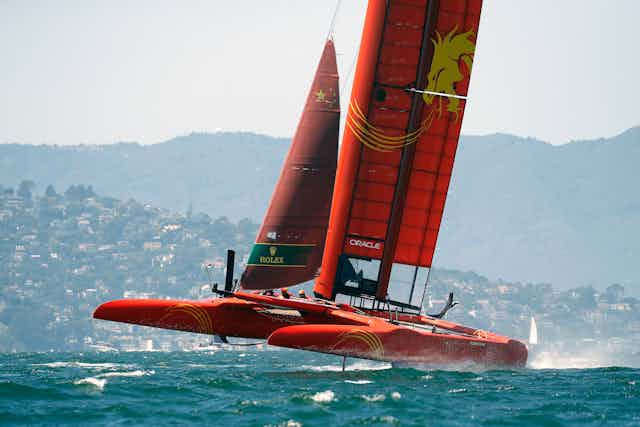
Sail GP: how do supercharged racing yachts go so fast? An engineer explains
Head of Engineering, Warsash School of Maritime Science and Engineering, Solent University
Disclosure statement
Jonathan Ridley does not work for, consult, own shares in or receive funding from any company or organisation that would benefit from this article, and has disclosed no relevant affiliations beyond their academic appointment.
View all partners
Sailing used to be considered as a rather sedate pastime. But in the past few years, the world of yacht racing has been revolutionised by the arrival of hydrofoil-supported catamarans, known as “foilers”. These vessels, more akin to high-performance aircraft than yachts, combine the laws of aerodynamics and hydrodynamics to create vessels capable of speeds of up to 50 knots, which is far faster than the wind propelling them.
An F50 catamaran preparing for the Sail GP series recently even broke this barrier, reaching an incredible speed of 50.22 knots (57.8mph) purely powered by the wind. This was achieved in a wind of just 19.3 knots (22.2mph). F50s are 15-metre-long, 8.8-metre-wide hydrofoil catamarans propelled by rigid sails and capable of such astounding speeds that Sail GP has been called the “ Formula One of sailing ”. How are these yachts able to go so fast? The answer lies in some simple fluid dynamics.
As a vessel’s hull moves through the water, there are two primary physical mechanisms that create drag and slow the vessel down. To build a faster boat you have to find ways to overcome the drag force.
The first mechanism is friction. As the water flows past the hull, a microscopic layer of water is effectively attached to the hull and is pulled along with the yacht. A second layer of water then attaches to the first layer, and the sliding or shearing between them creates friction.
On the outside of this is a third layer, which slides over the inner layers creating more friction, and so on. Together, these layers are known as the boundary layer – and it’s the shearing of the boundary layer’s molecules against each other that creates frictional drag.
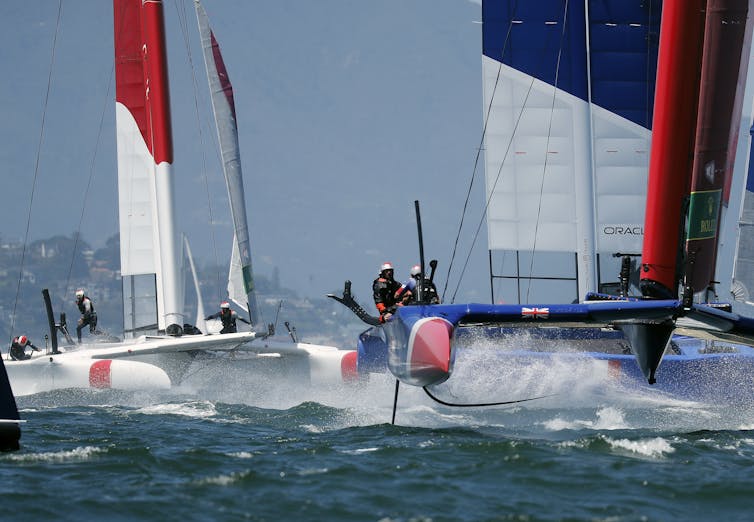
A yacht also makes waves as it pushes the water around and under the hull from the bow (front) to the stern (back) of the boat. The waves form two distinctive patterns around the yacht (one at each end), known as Kelvin Wave patterns.
These waves, which move at the same speed as the yacht, are very energetic. This creates drag on the boat known as the wave-making drag, which is responsible for around 90% of the total drag. As the yacht accelerates to faster speeds (close to the “hull speed”, explained later), these waves get higher and longer.
These two effects combine to produce a phenomenon known as “ hull speed ”, which is the fastest the boat can travel – and in conventional single-hull yachts it is very slow. A single-hull yacht of the same size as the F50 has a hull speed of around 12 mph.
However, it’s possible to reduce both the frictional and wave-making drag and overcome this hull-speed limit by building a yacht with hydrofoils . Hydrofoils are small, underwater wings. These act in the same way as an aircraft wing, creating a lift force which acts against gravity, lifting our yacht upwards so that the hull is clear of the water.

While an aircraft’s wings are very large, the high density of water compared to air means that we only need very small hydrofoils to produce a lot of the important lift force. A hydrofoil just the size of three A3 sheets of paper, when moving at just 10 mph, can produce enough lift to pick up a large person.
This significantly reduces the surface area and the volume of the boat that is underwater, which cuts the frictional drag and the wave-making drag, respectively. The combined effect is a reduction in the overall drag to a fraction of its original amount, so that the yacht is capable of sailing much faster than it could without hydrofoils.
The other innovation that helps boost the speed of racing yachts is the use of rigid sails . The power available from traditional sails to drive the boat forward is relatively small, limited by the fact that the sail’s forces have to act in equilibrium with a range of other forces, and that fabric sails do not make an ideal shape for creating power. Rigid sails, which are very similar in design to an aircraft wing, form a much more efficient shape than traditional sails, effectively giving the yacht a larger engine and more power.
As the yacht accelerates from the driving force of these sails, it experiences what is known as “ apparent wind ”. Imagine a completely calm day, with no wind. As you walk, you experience a breeze in your face at the same speed that you are walking. If there was a wind blowing too, you would feel a mixture of the real (or “true” wind) and the breeze you have generated.
The two together form the apparent wind, which can be faster than the true wind. If there is enough true wind combined with this apparent wind, then significant force and power can be generated from the sail to propel the yacht, so it can easily sail faster than the wind speed itself.
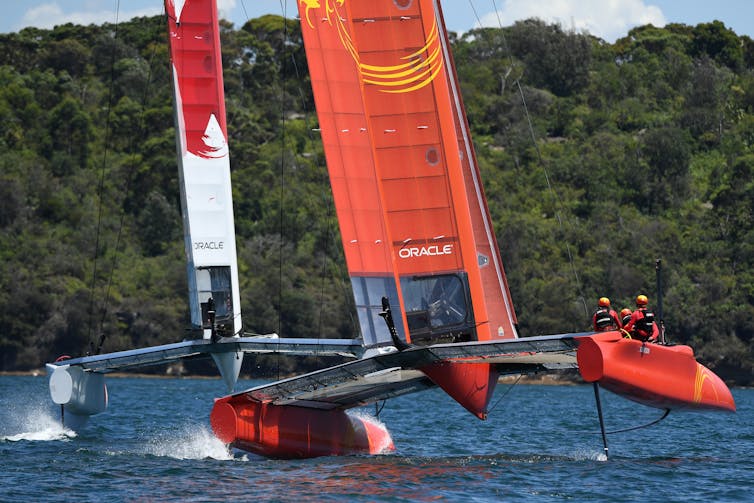
The combined effect of reducing the drag and increasing the driving power results in a yacht that is far faster than those of even a few years ago. But all of this would not be possible without one further advance: materials. In order to be able to “fly”, the yacht must have a low mass, and the hydrofoil itself must be very strong. To achieve the required mass, strength and rigidity using traditional boat-building materials such as wood or aluminium would be very difficult.
This is where modern advanced composite materials such as carbon fibre come in. Production techniques optimising weight, rigidity and strength allow the production of structures that are strong and light enough to produce incredible yachts like the F50.
The engineers who design these high-performance boats (known as naval architects ) are always looking to use new materials and science to get an optimum design. In theory, the F50 should be able to go even faster.
- Engineering
- Aerodynamics

Head of Evidence to Action

Supply Chain - Assistant/Associate Professor (Tenure-Track)

Education Research Fellow

OzGrav Postdoctoral Research Fellow

Casual Facilitator: GERRIC Student Programs - Arts, Design and Architecture
- Yachting for beginners
- Owning a yacht
- Motor Yachts
- Sailing Yacht
- Indian Ocean
- Mediterranean
- Buying or Selling a Yacht
- Yachting Events
- FAQ – Luxury Yacht Charter
- FAQ – Buying a Yacht
- FAQ – Sell your Yacht
- How Much Does It Cost To Charter A Luxury Yacht?
- All our Blog Post & News

What are the Fastest Cruising Catamaran on the Market?
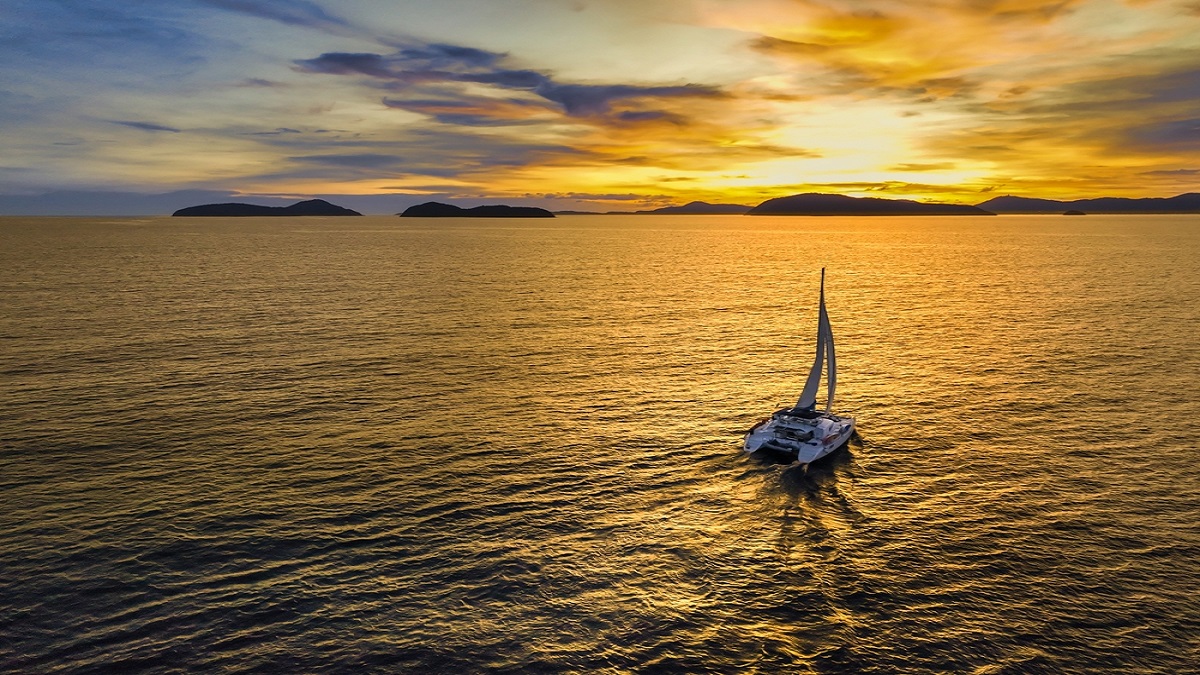
For those who love the thrill of the open sea, speed is an essential element of their sailing experience. For years, catamarans have been a top choice for sailors who want to explore while enjoying the benefits of speed, comfort , and luxury. In recent years, the trend towards high-end fast catamarans has exploded. If you are looking for speed combined with affordable luxury, look no further than the fastest catamarans on the market.
How fast can cruising catamarans usually go?
Cruising catamarans can reach speeds that can exceed their respective theoretical hull speed thanks to their light weight, generous amounts of sail area, and minimized wetted surface area. It is not uncommon for them to reach sailing speeds of 30 knots or more. They can also offer better stability than a monohull, making them an ideal choice for long ocean passages.
What Makes the Fastest Catamarans on the Market more Rapid Than the Others?

When it comes to catamarans, Gunboat is a brand that stands out from the crowd. Known for their exceptional quality, performance, and luxurious design, Gunboat delivers a unique sailing experience that has captivated the attention of sailors around the world. Their latest offerings – the Gunboat 68, 72V, and 80 – are perfect examples of the brand’s commitment to delivering top-of-the-line sailing yachts that offer the best of both worlds: the performances of a racer in a luxury cruiser catamaran.
The Gunboat 68 is a spacious and comfortable yacht that boasts an internal helm station and sophisticated lounging areas. With room for up to six cabins, including a spacious master, and a forward cockpit, the Gunboat 68 offers everything that sailors could ask for in a luxury catamaran. But don’t be fooled by its luxurious design – the Gunboat 68 also offers exceptional performance, making it a true racer’s yacht.
The Gunboat 80 takes everything that sailors loved about the Gunboat 68 and ramps it up to the next level, with even more space and more advanced features. Designed for sailors who demand the very best, the Gunboat 80 offers a cruising experience like no other. And as with all Gunboat yachts, performance is at the forefront of its design. Expect nothing less than exceptional sailing speeds and adrenaline-pumping races.
But perhaps the most exciting development in the Gunboat lineup is the new 72V. This unique yacht is a bit of a gamble for the brand as it features a flybridge. But don’t think that this will make it any less of a racer – the 72V is designed to be streamlined compared to traditional production catamarans, and it still offers exceptional speed and performance. And with a flybridge helm station, sailors can look forward to even more control and a truly immersive sailing experience.
“Cruisers do not understand the massive difference between a racer and cruiser, with tremendous emphasis on weight and performance.” Gunboat understands that difference all too well, and their commitment to pushing the limits of what is possible with luxury cruiser catamarans is what sets them apart. Gunboat is leading the way in the world of high-performance luxury sailing, and they show no signs of slowing down any time soon.
Read also: INTRODUCING THE NEW GUNBOAT 72V “WONDERFUL”: THE ULTIMATE FLYBRIDGE CATAMARAN
HH Catamarans
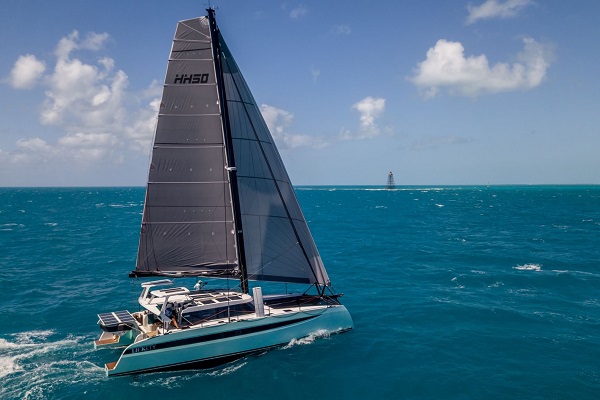
HH Catamarans may be a relatively new player in the world of high-performance cruising yachts, but they have quickly risen to become one of the most respected names in the industry. Built in Xiamen, China, by the same contractor that once had built Gunboats, HH Catamarans are designed to offer an unparalleled level of luxury combined with the ultimate sailing performance.
When HH Catamarans emerged in the market a decade ago, they had to make a crucial decision about what kind of boat they wanted to create. Ultimately, they decided to prioritize speed and performance over everything else, a decision that has drawn praise from seasoned sailors. Their boats range from 44ft to 88ft in length, all featuring exceptional craftsmanship and engineering.
One of the crucial features on HH Catamarans is their hydraulics and smart deck planning. Combined with their captive winches, these features allow sailors to get the boat off the mooring, sails up, and cruising at speeds up to 20 knots in just four minutes. This level of speed and agility is unparalleled in the world of cruising catamarans.
In addition to their performance and speed, HH Catamarans boast quality construction that makes them the strongest yachts possible without adding significant weight. Carbon and epoxy are used to create the strongest possible hull, while all lines run under-deck to create an uncluttered walkway. The stanchions are also a generous 900mm tall, providing necessary safety when sailing with friends and family. The continuous, unbroken toe rail runs the length of the deck, enhancing the boat’s aesthetics while keeping the structure stable.
Overall, HH Catamarans has carved out its niche in the ultra-luxury sailing market, offering high-performance cruising catamarans that deliver both speed and comfort in equal measure. Every detail has been carefully thought out, from the construction of the hull to the onboard technology and smart deck planning, delivering an unparalleled sailing experience for those who want to push their yachts to the limit.
The Kinetics Catamaran’s Unmatched Velocity and Beyond
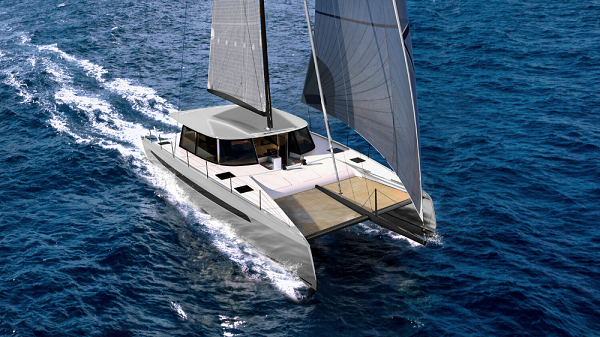
Founded in 2018, Kinetic Catamarans is a US company based in Knysna, South Africa. Their team consists of Bob Hayward, a successful US real estate developer, co-founder of Summit Entertainment, and farmer, and Leon Scheepers, a highly respected South African boatbuilder with extensive expertise in multihull production. Both share a deep love for sailing and a strong commitment to improving the boating industry.
Their main goal is to build luxury performance cruising catamarans of the highest caliber. In 2021, they proudly achieved this goal when the KC54 received prestigious accolades shortly after its launch. The Cruising World Magazine awarded it the Boat of the Year in the Judges Special Recognition category, and it was also named the Best Large Multihull (50ft and above) by SAIL Magazine.
Nevertheless, Kinetic Catamarans has been making waves in the boating industry with their luxury performance cruising catamarans, and their latest model, the KC62 , takes their offerings to a whole new level. This vessel boasts unmatched velocity and beyond and is a testament to the dedication and expertise of the Kinetic team.
One of the standout features of the KC62 is its lightweight design. The use of chemically-strengthened glass for the 360° windows, combined with other weight-saving measures, has resulted in a vessel that is both faster and more fuel-efficient than other catamarans in its class. In fact, the KC62 has been clocked at speeds of up to 30 knots!
But this vessel isn’t just about speed. It also offers unmatched comfort and luxury for its passengers. The spacious double cabins are outfitted with abundant clothing storage and en-suite bathrooms, while the saloons provide a cozy space for relaxing and socializing. The use of designer tables and stools and the latest appliances adds a touch of elegance to an already luxurious experience.
While the KC62 shares many of the features of other Kinetic catamarans, it also has its own unique touches that set it apart. For example, the vessel has two helm stations on each quarter and another one inside, as well as a forward cockpit that doubles as a leisure zone. This forward cockpit provides a cool and breezy spot for passengers to relax and take in the stunning scenery.
All of Kinetic’s vessels are designed by the highly experienced and innovative Simonis Voogd Design BV, and the KC62 is no exception. This vessel is a testament to the collaborative effort of a team dedicated to creating the highest quality, most luxurious catamarans on the water today.
Conclusion:
The market for fast cruiser catamarans is growing, with more brands and models being developed each year. These catamarans offer high performance, stability, and luxury, making them an ideal choice for adventurous sailors who want to explore the world in style. While the fastest catamarans on the market may come with a hefty price tag, the experience of sailing on one of these vessels is second to none. With their impressive speeds and luxurious amenities, it is no surprise that more and more sailors are turning to fast cruiser catamarans for their next adventure on the water.
Read also: 9 catamarans for sale under 5 millions
Predator 84 for charter: a Review of the Must Try “Alvium”
Where can you sail in march, you might also like.
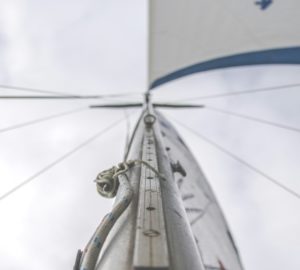
The Pinnacle of Yachting Discover The Finest Sailing Yachts

Who Owns the Superyachts in Below Deck
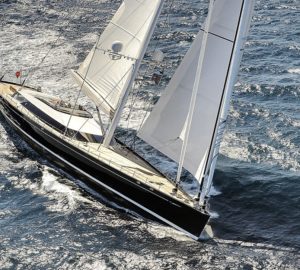
Luxury Charter Yacht of the month: The 58m Kokomo

A Complete Catamaran Guide
- Post Written By: Boater Jer
- Published: January 26, 2020
- Updated: November 27, 2020

Disclaimer: You might notice that we recommend products in some articles. We may earn a commission for referring you if you click the link and buy a product.
We only recommend products we’ve tried/tested/own (that’s why you won’t find thousands of affiliate links on my site). If you have experience with one of the products we’ve mentioned, please share your experiences in the comments at the end.
There you are, out on the water when a strange craft approaches. Is it a sailboat? It sure looks like one until it turns to face you. That’s when you notice this boat doesn’t have just one hull. It has two hulls and it’s called a catamaran.
Catamarans are unique, and highly stable watercraft. We’ll explore all the ins and outs of sailing the waters in one of these weird, and awesome multi-hulled craft. Join me as we explore the wild world of sailing catamarans.
A History Of The Catamaran
It is believed that the first people to use a catamaran design were those living in Australasia.
The succession of boat design in this region was actually very interesting. The beginning of boats in the area was simple, albeit conventional rafts. These were fashioned from logs strewn together with plant fiber lashings such as those formed using bamboo fiber.
Catamaran Evolution
The conventional raft gave way to a minimal raft. This design was basically a conventional raft with two cross beams added in the form of logs. These would be eventually hollowed out to improve buoyancy.
The next step in the evolution of boats in the Australasian region was the double canoe. This proved to be the first real catamarans.
After some time, the form evolved further into the asymmetrical double canoe design. In this design, one canoe was large and the other attached canoe was smaller.
The asymmetrical design quickly evolved into the single-outrigger boat like the one shown in the photo below.
The final stage of the evolution of the catamaran in the region was to gain a second outrigger. This in effect created the trimaran with the single central hull and dual outriggers.
Eye Witness Accounts Of Catamarans
In 1697, William Dampier wrote of witnessing a type of seafaring vessel off the coast of Coromandel. He noted how the locals called the type of boat a catamaran. He also noted that it had multiple hulls (logs) and that they were small vessels that the person operating would have to hang partway into the water, straddling the hull (log).
The name catamaran came from the Tamil. And yet, it was easily applied by the European visitors to the two hulled sailing vessels that sped across the water in the region.
Although Dampier may have described the catamaran in the 1690s, the type of boat was actually used as early as the 5th century by the Tamil Chola dynasty. They used boats to move their troops from one island to another. Using this design of boat allowed them to travel heavy, travel quickly and was partially responsible for the conquering of neighboring Burma, Malaysia, and Indonesia.
Building A Boat – Basics Of Catamaran Construction
A boat is usually thought of as being a single-hulled vessel that travels along the surface of the water. It can have multiple types, shapes, and designs of the hull. However, it is often only thought of as having a single hull. But, what if it had two hulls? Would that be like taking two separate boats, and making a raft over both of them? In essence, that is exactly what a catamaran is: two boats made into one.
Advantages Of Multiple Hulls
- More stability than a monohull
- Wide supporting base allows for larger sails than monohull craft of the same length
- Hull does not require the deep-running keel of a standard monohull sailboat
- Less hull drag in the water than a monohull
- Less power required to drive a catamaran forward than a monohull boat
Disadvantages Of Multiple Hulls
- Due to multiple hulls, construction is more expensive than a monohull design
- Catamaran speed relies on lightweight materials to make a lightweight craft. This also drives up the cost of construction.
- Extra engineering requirements for multi-hull craft also increase the cost of construction.
Conclusion? Well, it looks to me like everything about catamarans points towards superiority over monohulls in nearly every way. But, you get what you pay for. I think the same thing likely applies to cars too. For instance, I have a performance car that cost me about 10k more than the equivalent non-sports car within the same class.
Yet to drive the vehicle, it performs so much better than the normal version of the car, it really speaks volumes to the difference between a common vehicle, and a performance one.
Speaking of performance vehicles, let’s take a look now at the different kinds and uses of a catamaran.
Catamaran Types
Commercial catamarans – ferries.
One of the most common uses for a catamaran is the commercial use of the vehicle design when it comes to ferries. This is likely due to the wide, flat deck possibilities of a catamaran versus a monohulled boat. Not only that, but the catamaran is also a much more stable bodied vessel. This again makes it a superior design for transporting larger land vessels like trucks and so forth. They can easily drive on the ferry without fear of the ferry tipping over.
Some ferries are designed for taking vehicles, like the one you might find in the city of Toronto. Where it transports cars from the mainland to Toronto Island. Others are designed specifically with the sole purpose of transporting people. I took a look at one such ferry that operates in Germany. Take a look at the following case study.
Commercial Use Case Study – The Ferry
The FRS Helgoline is a ferry catamaran operating out of Flensburg, Germany, close to the Danish border.
According to the ferry company’s website, the ferry runs using four main engines which are run to a capacity of 12,182 hp combined. This blasts this ferry at a speed of 35 knots or 65 km/hour. This is equivalent to 40 miles per hour. That’s pretty good considering the size and weight of the ship body this catamaran can carry.
Speaking of capacity, the ship can carry 680 passengers. At 56.4 meters long (185 feet) by 14 meters wide (45.9 feet), that’s a decent passenger capacity.
Catamaran Passenger Capacity Versus Monohull Boat Passenger Capacity
The general rule for calculating passenger capacity for a boat is as follows.
Length x Width / 15 = Passenger Capacity
Therefore, the FRS Helgoline should have a calculated capacity calculated as follows.
185 x 45.9 / 15 = 566
But it actually has a capacity of 680 which is a 20% increase in capacity over a standard monohull.
For comparison, let’s look at a superyacht. A 48.5m (159 feet) long by 10.7m (35 feet) beam (width of the boat) Palmer Johnson Supersport 48 (valued at about $28.5 million dollars) should have a capacity calculated as follows.
159 x 35 / 15 = 371
In short, 26 feet of difference in length equates to 309 fewer passengers. It is almost half of the capacity of the catamaran at 26 feet longer length.
Photo courtesy of https://sysyachtsales.com/
Commercial Catamarans – Service Vehicles
Although Catamarans are typically used as ferries due to their stability and ability to carry wide loads on their flat decks, there are many different service catamarans out there as well. From a support vessel to a crew transfer or search and rescue, catamarans are a solid and stable platform to build a ship on.
This is the Ardea which is a 20 meter (65.6 feet) catamaran to be used for crew transport and as a support ship. This ship was built by the Echo Marine Group and delivered to Western Australia in early 2019. This particular vessel is in the service of the Cape Preston Sino Iron Project.
Catamarans are used all around the world, for a variety of tasks, not just ferries or support craft.
Commercial Catamarans – Cruise Lines
Now these are the catamarans we all want to be aboard, aren’t they? Due to the wide stance, these ships can feature massive halls and wide-open interior areas. These ships are stable, and some would say even more stable and safer than monohull design ships.
There are many cruise ship catamarans in use today around the world. Some of the more ‘famous’ catamaran cruises are those which investigate the Galapagos Islands. There are several high-end, small fleet, cruise lines operating to the Galapagos which utilize catamaran design vessels as their primary ship type.
These ships can be extremely comfortable and stable and often offer some reprieve to those who may otherwise feel seasick. It won’t stop the feeling, but the more stable the hull, the less the boat rocks around.
Military Catamarans
Catamarans make excellent military transport vessels. They are stable and the potential to have a large, flat and wide deck for transporting land craft, troops or acting as a landing pad for vertical take-off aerial craft. The stability of the two hulls makes the vessel an excellent candidate for military use, and thus it is used for said purpose.
As you can clearly see in the image of the USNS Spearhead, the rear of the vessel has a moveable ramp that can be used for loading and unloading land vehicles. The interior bay of the craft is visible in the image as well, a large area for storage of vehicles, supplies and more. The crane arm on the back of the ship also shows how it is a versatile craft, set up to act as an excellent support craft with a helicopter landing pad and ample storage and freight capacity.
Recreational Catamarans
Catamaran Personal WatercraftThe wind is in your hair, the warm spray from the hull cutting over the edge of each wave as you skip over the water. That is life, let me tell you. Personal watercraft have come a long way over the years and the small one, two, three and four-person catamarans have come a long way as well.
Depending on the options, you can get a small one or two-person catamaran for as little as $1500 new. That might be an inflatable though. There are some very nice, rigid hull designed catamarans for 1-4 people that range from $3500 to $15000. And these are basically open, personal watercraft like that shown in the image below.
Using a small catamaran can be quite challenging to learn at first. Sailing is not for the faint of heart. It requires skill, technique, knowledge of the wind and sea, and a bit of hard work. But it can be fun, rewarding and a great way to catch some sun and fresh air out on the water. It’s a relatively GREEN sport as well. Given the use of sails over gas-powered motors that is.
‘Sailing Cats’ – Sailing Catamarans – Yacht & Luxury Class
Here’s where we get into the dreamy boats of the rich and famous. I priced out a small 43’ luxury Leopard 40 sailing catamaran. Even before I added any extras at all, the base price was $399,000 USD. I imagine if I added a few of the multiple extras available, and some tax, freight and that sort of thing, I’m easily in half a million dollars. And that’s the smallest base model.
There are all kinds of luxury catamaran shipbuilders across the world. From Asia to Europe and The Americas, it seems any major boating country has at least one company building luxury catamarans. It’s weird that you don’t see more of them on the water though, don’t you think?
Being sailing vessels, these luxury cats require some training in sailing before you get behind the wheel. And considering the price point, I would definitely want to be at least a semi-decent sailor with some good few years experience under my belt before I would comfortable at the helm of a half-million-dollar sailing cat. It’s all relative I suppose. I imagine a billionaire might bat an eye at the prospect of wrecking a half-million-dollar boat. But to me, and most of you reading this, that’s likely a lot of money.
‘Power Cats’ – Powered Catamarans
The powered catamaran is one of my favorite boats. They have sort of a muscle car appearance with the wide and often tall front end of the boats. I find it to be reminiscent of a large air intake on the front hood of a rally race car like the Subaru WRX, for instance. These boats are fast, they are stable and handle very well. Catamarans are often considered the boat of choice for long sea voyages due to their stability.
A powered catamaran will definitely cost more than a powered monohull boat of the same length. Why? Well, the powered catamaran has one crucial downside. That is, it needs two engines. One for each of the two hulls. Otherwise, it’s off balance for propulsion. These two engines or motors have to be in sync with each other or again, the propulsion will be off-balance. Because they have two motors, they have double the maintenance when it comes to maintaining the propulsion system.
More components also means a greater chance of things breaking down. In essence, it doubles the chances of the ship having a motor break down. The saving grace is that should one motor break, they have a backup, even if it does mean very unbalanced propulsion. In contrast, a monohull vessel of the same length may only have half the chance of motor failure due to only having one motor, but if that one motor breaks, then what? Call for help, that’s what. A cat would have a struggling chance to get itself back to port. A monohull would be dead in the water unless it was carrying spare parts or another motor onboard somewhere.
Catamaran Frequently Asked Questions
What is a catamaran cruise.
A catamaran cruise is simply a cruise on a dual hull design boat. Often used for river cruises, the catamaran which is used as cruise ships are often considerably smaller than their giant monohulled counterparts.
What is the purpose of a catamaran?
A catamaran is a design for a boat that utilizes two hulls. Due to the flat, platform-like-potential for the deck of the boat, the catamaran is often purposed with transporting materials, vehicles, and people. For instance, catamarans are quite often used as ferries.
Is catamaran safe?
Catamaran are very safe water craft. The design of riding on two hulls separated by a gap in between, in essence is like giving a car a double-wide wheel base. The wider the stance, the more stable the craft, from side to side anyway. And if the length of the boat is proportional to the width, then it becomes an extremely stable craft. That is why catamarans are often considered the best to be used for long voyages. Yes, catamaran are safe.
What is the difference between a catamaran and a sailboat?
A traditional sailboat is a deep, monohull vessel that has at least one mast extending high into the air above the deck to hold sails. A catamaran refers to the design of a dual-hull boat and really has nothing to do with sails. Although, catamaran do make excellent sailing boats as well, they are quite capable of acting as power boats and do not require sails if they have the correct amount of powered motors to propel them. Sailboats, although also able to be powered if a motor is provided, are traditionally monohull and wind-powered exclusively.
Do catamarans have small interiors?
The size of an interior cabin on a boat is typically proportional to the size of the boat itself. If a catamaran has above-deck cabins, they will likely be able to be of a larger design than those you would find on deck of a monohull boat. This is because a catamaran has a much wider footprint than a monohull boat of the same length. This extra width would allow for larger on deck cabins.
How much does a catamaran cost?
A personal watercraft (1-2 person) inflatable catamaran will run you anywhere from $1500-$12000 USD, depending on the quality and features. The rigid hull catamarans of the same size start at about $4500 USD.
A small cabin cruiser type of catamaran will typically start at about $60000 for a small base model and the price just goes up and up depending on size and features.
For Instance, a 40’, 3 cabin with 1 washroom cat will cost you about $500,000 USD for the base model. They are considerably more expensive that a monohull of the same length. However, the trade-off is greater stability and a smoother, more comfortable ride.
Is a catamaran more work to maintain?
Technically yes. Due to having two hulls and if powered, two motors and likely also water jets, this means you have double the oil changes of a boat that would have a single motor. Once you get past the basic engine and hull maintenance, a catamaran is not that much more work than a monohull ship of the same length.
The trouble with catamarans in terms of maintenance, is that once they reach a certain length, the width becomes more than a standard lane on the road. That being said, if you ever need to transport the boat via land, it can be quite the challenge. Especially if you need to pay to have a police escort for an extra-wide trailer. And special licensing might be involved as well.
What is the difference between a catamaran and a trimaran?
A catamaran is a dual hull boat. In other words, it has two hulls. A trimaran has three hulls.
Is a catamaran considered a yacht?
According to Oxford dictionary, a yacht is a medium-sized sailboat equipped for cruising or racing. A catamaran, on the other hand, is a boat with two hulls. Therefore, a catamaran can most certainly also be a yacht. And likewise, if a yacht has two hulls, then it is a catamaran as well.
Can you get seasick on a catamaran?
Seasickness occurs when a person feels nauseous from the swaying motion of a rocking ship. These feelings may be lessened on a catamaran, due to their extra stability. However, a catamaran may be slightly more stable than a monohull of the same length, but it is still a boat. And it will still make someone who experiences seasickness continue to feel the ill effects.
Are catamarans more stable in rough seas?
Catamarans are known to be more stable than monohull ships of the same length. This is why catamarans are often the ship type of choice for long sea voyages due to their stability.
Why do catamarans capsize?
Catamarans are not known for capsizing. The larger vessels that is anyway. But, it does happen from time to time. Catamarans are known for their stability, so typically if a capsize event should occur, it is typical for them to be extreme circumstances.
Personal watercraft catamarans are a different story though. These are in fact known for tipping over. Not because they are less stable than their monohull counterparts of the same length. But instead, because they are able to go considerably faster than monohull personal watercraft of the same length (not including powered craft though). This is due to the sailing cats being able to have a larger sail than a small monohull sailboat of the same length.
Due to the extra sail, they are able to travel faster than monohull sailboats of the same length. This allows them to whip around on the water and at higher speeds, whipping your cat about quick can easily send it over sideways. Extra speed means fast turns carry momentum in the direction of travel and that extra speed equates to tipping over if turned too fast. To sum up, they capsize due to user error or extreme events.
Which is safer, a catamaran or a monohull?
Due to the extra stability of having a wider footprint than a monohull, a catamaran of the same length is the safer vessel.
Are catamarans safer than sailboats?
The same rule applies to stability versus the length of the hull. A cat will always be the more stable length for length. However, due to their ability to go much faster than a monohull sailboat, this kind of cancels out some of the added safety due to stability. With that in mind, they may just be about the same but there is one generalization we can make when comparing the safety of catamarans vs sailboats: At the same speed, and of equal length, sailing or power catamaran will be safer than a monohull sailboat.
How fast can catamarans go?
The speed a catamaran can go is entirely dependent upon the hull design, weight of the vessel, the strength of propulsion (be it wind or powered) and so on. The general rule is that in terms of sailing cats vs monohull sailboats, a cat of equal length can typically go faster than a sailboat.
In terms of powered cats vs powerboats, a powered catamaran will typically require less energy to move forward than a monohull of the same sort of hull design (but monohull of course) and thus a cat should, in theory, be able to go faster than a monohull when both are using propulsion that is equal in power.
Bibliography
- Wikipedia – Catamarans
- Mahdi, Waruno (1999). “The Dispersal of Austronesian boat forms in the Indian Ocean”. In Blench, Roger; Spriggs, Matthew (eds.). Archaeology and Language III: Artefacts languages, and texts . One World Archaeology. 34 . Routledge. pp. 144–179. ISBN 0415100542 .
- Wikipedia – Spearhead -class expeditionary fast transport
- https://www.tiki-toki.com/timeline/entry/169516/Origin-of-the-catamaran/#vars!panel=1620923!
- https://www.austal.com/ships/passenger-express-56
- https://www.adventure-life.com/galapagos/galapagos-catamaran-cruises
Boating Gear
Take a look at our Recommended page for a variety of items. Here are some of the things you can expect:
- GPS And Fish Trackers
- Hitch And Trailer Supplies
- Lifejackets And Specialty Clothing
- Boating Books And More!
More From Boating Guide Magazine
- Pontoon Boat Basics
- The Complete Runabout Boat & Trailer Towing Guide
- Winterizing Your Boat
- Boating Gear Requirements For Canada And USA Waters
- Aluminum vs. Fiberglass Bass Boats
- Better Boating At Night & How To Survive The Darkness
- Staying Safe On A Catamaran: 24 Essential Tips
- Can A Catamaran Capsize?
- 4 Common Types Of Propulsion For Boats
Return To Home * About Boating Guide * About The Author
fakewatches.is
Share this post with your friends.
- Tags: boat type , catamaran , catamaran basics , catamaran essentials , sailing
Subscribe to our Newsletter
Join us in our love for all things water. And Adventure.

Do Catamarans Have Bathrooms?
Heading out on the water for the weekend has its benefits, especially if you’re cruising in style on a catamaran. If you’re anything like me, you get excited about the adventure and sometimes forget to think of the obvious. Well, if you’re a man and you’re about to take your wife out on a catamaran for the first time, I bet one of the first questions she’ll ask is, ‘Does it have a washroom?”. And that is a perfectly reasonable question, especially if you intend to spend some decent time out on the water.

Can Snow Damage A Kayak
Asking ‘Can snow damage a kayak?’ is a good idea when selecting a location for kayak winter storage. However, kayak outside storage for winter may not be the best solution, at least not for your kayak’s hull integrity. Snow can cause significant damage to your kayak. However, it is not just snow that can damage
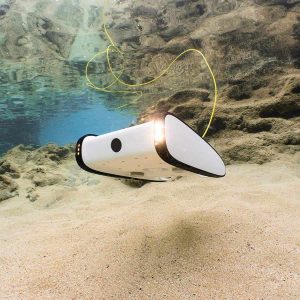
The Trident Underwater Drone Bundle – Best Deal Under The Sea?
ROVs, or underwater drones, are enhancing the fun element of video and image shooting from totally astonishing angles. If you are a videography/ photography enthusiast, then you know what we are talking about here. You are always on the lookout for different perspectives to shoot footage, and what could amaze you more than a drone!

PowerSeeker Intelligent Fish Finder – A Smart Fishing Gadget
PowerSeeker Intelligent Fish Finder Review Do you love fishing? Who doesn’t? Fishing is not an easy task, especially if you’re out on a trip with your friends. It’s because, at such times, it becomes a matter of pride to quickly catch a vast fish. Mostly, people find it hard even to trace a fish. In

Crab Island by Pontoon: A Fun Watery Boating Guide Destination in 2024
Crab island isn’t an island at all, but an underwater sandbar that’s become the Mecca of boat relaxing and watery good times. Learn more at www.Boating.Guide.


The Elkton Outdoors Cormorant 2-Person Tandem Inflatable Kayak Review (My First Impressions)
I decided to share my tandem inflatable kayak review because I think there is a lack of transparency online about these products. Besides being the most affordable way to explore your favorite fishing spots, kayaking can help improve your mental and physical health. Fortunately, kayak manufacturers understand this, which is why they have produced some

Boat Information By Type
© 2023 Boating.Guide, A Hyperwave Media Group Ltd. Publication.
Privacy Overview

My Cruiser Life Magazine
Fastest Catamarans for Cruising in 2023
Catamarans appeal to sailors and would-be sailors for a variety of reasons. One of those reasons is the need for speed—cats have a reputation for being faster. There are dozens of brands and tons of great boat designs that capitalize on this, and designers are constantly pushing the bounds and asking, “Really, how fast can a catamaran go?”
Performance sailing catamarans may look like your run-of-the-mill Leopard or Lagoon from a distance. But these boats are full of little tricks to boost their speeds—narrow hull designs, retractable daggerboards instead of keels, and extensive use of cutting-edge lightweight materials like carbon fiber. All of this adds up, so expect to pay double, triple, or maybe much more for a truly fast catamaran. And that means there are far fewer boats on the water, and owning one puts you in an exclusive club.
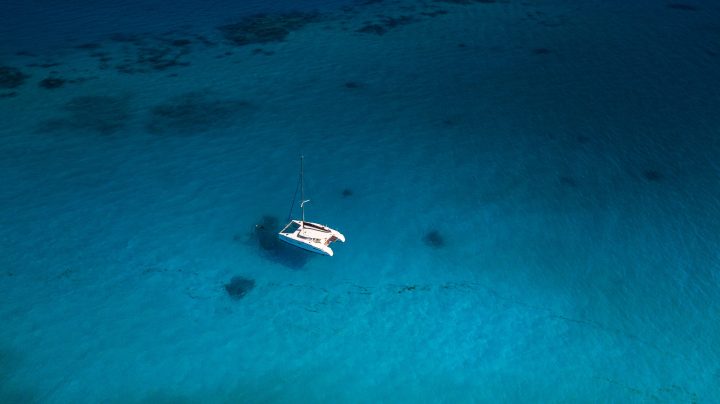
Table of Contents
Neel trimarans, what is a fast catamaran, how fast can a catamaran go, are fast catamarans the boat you’re looking for, fast catamarans faqs, top brands of fast catamarans.
Here’s a list of some of the best-known and trail-blazing fast catamaran makers. These companies are making luxury performance catamarans suited for owners who want to cruise fast. These aren’t barebones race boats built for nothing but speed. Instead, these are comfortable boats that will outperform most others in their class.
Most performance boats will be 45 feet long or more. Small catamarans don’t fall into this category, and most production liveaboard catamarans are built too heavily in order to save money.
For more than two decades, Gunboat has been setting the bar on what a performance catamaran can be. They took state-of-the-art technologies from the racing world and applied them to family-friendly cruising catamarans. The company started in the US in 2002. One of the company’s stated missions is to create boats that sail faster than the wind in anything more than 6 knots of breeze.
Since 2016, Gunboat has built top-quality boats at their La Grande-Motte, France, facility. However, they are still a boutique builder making only a handful of boats yearly. Their current offerings include the 68, 72, and 80. All boats have narrow hulls, retractable boards, high-performance sail plans, carbon fiber construction, and luxurious living accommodations.
The first hull of the Gunboat 68, CONDOR, was launched in 2019 and set out on a trans-Atlantic crossing immediately after its sea trials. The crew wrote a detailed report of the experience and the boat’s performance. CONDOR exceeded 30 knots occasionally, but average speeds were between 14 and 17 knots. Their best 24 hours saw 328 nm (an average speed of 13.7 knots).
The company motto says it all. “Life is too short to sail a slow boat.”
Outremer Catamarans is one of the original makers of French performance cats, in business since 1984. According to their website, the company has made over 300 boats since then. A large-scale production boat maker they are not. These are custom-built fast catamarans of the highest quality, made for safety, comfort, and speed. Outremer recently received much attention when popular YouTubers Sailing La Vagabonde sailed aboard an Outremer 45 for several years.
Currently, Outremer offers boats ranging from the 45 to the 5X (48 to 60 feet long). The X models (4X and 5X) are even more performance-oriented, with more extensive use of carbon fiber and a more race-inspired sail plan.
View this post on Instagram A post shared by Riley Whitelum (@riley.whitelum)
Catana is yet another French performance brand of luxury cruising catamaran. Today, Catana Group also makes Bali cruising catamarans, effectively marketing Catanas to the performance set and Bali’s to the cruising and charter set. https://www.catana.com
Presently, Catana is only making two models, the OC50 and the 53. Historically, however, Catana has made many beautiful boats. Notably, the 471 is a fast cruising catamaran that is a favorite among long-distance cruisers. On the smaller side, the 431 and even the 401 and 381 are quick and fun sailers that move better than their competition.
Catanas are easily recognizable by their daggerboards and narrow hulls with asymmetrical designs. In addition, they use a lightweight composite layup that results in a very stiff boat that weighs less than their competitors. Still, Catanas are not on the same level as an Outremer 5X or Gunboat–these are fiberglass boats that are built better than the competition and made to outperform many other boats.
HH Catamarans is Gunboat’s first real competitor in the high-end performance cat market. They started in 2012 and are part of the Hudson Yacht Group. The boats are designed by Morrelli & Melvin, a highly-regarded multihull design firm, and are built in Xiamen, China, or Cebu, Philippines.
HH has boats in their model line from 44 to 88 feet long. The company focuses on providing what owners and sailors want and are looking for, so you’ll see lots of customizability within the lineup. They include features you won’t find from a lot of builders, including lots of planned real estate for solar panels (5kW or more!), hybrid drive systems, and ocean cruising OC (keels) or sport cruising SC (daggerboard) models to pick from.
View this post on Instagram A post shared by HH Catamarans (@hh.catamarans)
Balance started in South Africa in 2013. They focus on making semi-custom, comfortable performance yachts that are strong and safe and can be easily operated single-handedly or by a couple. They are live-aboard boats that strike a balance between comfort and performance. But, compared to the current offerings from Lagoon or Leopard, it’s clear that Balance cats skew far more toward performance than others do.
Models currently range from the 442 to the 750. They’re available with daggerboards or keels and made with extensive carbon fiber and all epoxy-resin composites. According to their website, the current record speed for a Balance 482 while surfing is 28 knots. She’ll cruise all day between 8 and 14 on a reach, though. They describe the 482 as a “trend-setting circumnavigator”—the perfect boat for your sail around the world route .
Kinetic Catamarans are designed by Simonis Voogd and built in Knysna, South Africa. Like others on the list, these are semi-custom, luxury, performance cruising cats with an emphasis on speed. They have all-carbon construction, carbon spars, laminated sails, and a forward sailing cockpit deck layout.
Since they are truly semi-custom, each boat is spec-ed out to each buyer’s vision. This includes standard or racing rigs, centerboards or daggerboards, and many furnishings, layouts, and outfitting options. Kinetic currently offers 54 and 62-foot versions.
What’s better than two hulls? Three, maybe. That is, three might be better if your goal is truly fast sailing. Neel Trimarans is a new French builder attempting to capitalize on this simple fact by merging the best of all worlds—the space and liveability of a cruising catamaran with the performance, sail efficiency, and stability of an offshore-capable tri.
The company presently offers models between 43 and 65 feet. They say cruising speeds are reliably over 10 knots, with 15 to 18 knots when the breeze freshens. Compared to cats, these boats’ rigid central hulls allow for stronger rigging and better upwind performance, and the central keel allows better tracking and rudder control.
Now you’ve looked at some fast cats, you might wonder what constitutes “fast.”
You will be wowed if you’re selling your 30-foot monohull and moving up to a 50-foot cat. But if you’re coming from the world of car and plane travel, sailboats of any ilk are anything but “fast.”
The first thing to accept is that all sailboats are slow . This shocks many people who think they’d like to travel and see the world by sailboat. The marketing of these “fast cats” is everywhere, and the idea that the faster boat is safer because you can “beat the weather” is especially pervasive. No sailboat at sea can outrun a front or storm cell moving at 30 or 40 knots.
In truth, the fastest catamaran you can comfortably live aboard and cruise on will average out under 15 knots . In similar conditions, production catamarans might be doing 10 to 12. The monohull speeds of the same length might be 7 or 8 knots, and a bigger monohull with similar living space might be doing 10 or 12.
So don’t be lulled or wowed by these vessel’s maximum speed or “surfing” claims—they’re fun numbers to kick around with your dock neighbors, but what really matters is how many miles you can tick off in a day of travel.
To get more speed than this, you’ll either push the boat in ways that are not safe or comfortable at sea, or you will have to find bigger, more advanced, and even more expensive vessels. Most boats on this list are luxury liveaboard that is safe to travel the world.
But are they fast? As the old sailor saying goes, “Nothing goes to weather like a 747.” Sailing is still sailing. And sailing is a slow, slow, slow way to see the world.
Traditional monohull sailboats are displacement vessels that are limited by a few rules. As they push the water out of their way, they build up bow and stern waves. Push too much water, and the waves get bigger, pulling the vessel farther into the water. So no matter how you power it, it’s limited to hull speed. Hull speed is a factor of waterline length, width of the hull, and displacement.
Modern designs favor flat bottoms like powerboats, with the idea that they can surf and plane to get more speed. Catamarans take this even further, and with some clever design tricks , it’s possible to get a catamaran well above displacement speeds for extended runs. Of course, a lot depends on the hull type, and other factors are also at play.
Catamarans are very sensitive to weight . Their speed comes from being a lightweight boat with the ability to fly across the water, contrary to how a heavy monohull plows through it. The heavier the boat, the lower it sits in the water.
Therefore, adding weight to any catamaran will slow it down. To this end, finding a performance-oriented liveaboard catamaran less than 47 feet long is difficult. Less than this, and the narrow hulls simply can’t hold the weight of you and your stuff.
Finally, there’s the consideration of the environment you’re sailing in. The wind is obvious—they sail fastest on a broad reach. And, just like any other type of boat, they are slowest when close-hauled and on a run.
Rough seas are another of the catamaran characteristics to consider in your need for speed. Often the boat is capable of more, but the ride is rough and uncomfortable.
So you shorten sail and slow down to find the sweet spot of comfortable sailing speed—enough power to maintain a good speed without pounding your brains out and causing undo fatigue on the crew. And, of course, the rougher the conditions, the slower the boat’s performance as she slows and in the troughs and speeds “downhill.”
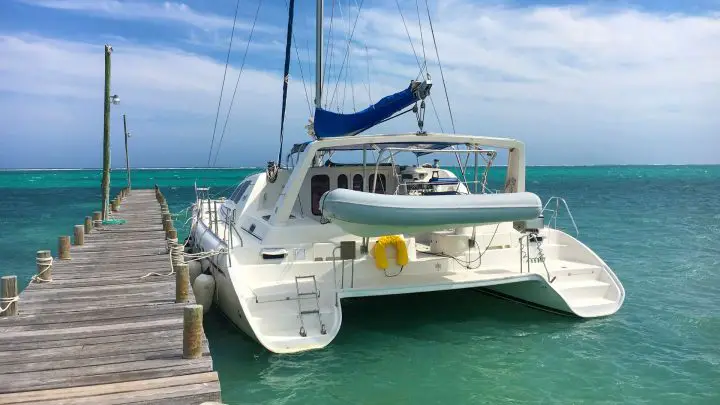
While they are faster than other vessels, that’s certainly not the only thing catamarans have going for them. Fast is a relative term, and “fast” sailing is still awfully slow. So unless you already love sailing, sailing fast might not have as much appeal as you’d expect.
Catamarans are great vessels with a lot of pluses. And these fast modern catamarans are some of the best—luxurious living space aboard comfortable, top-quality vessels.
What are the fastest catamarans?
Like those used in recent America’s Cup races, pure racing catamarans use foils to lift their hulls out of the water. Whether performance-oriented or not, regular catamarans for cruising are much slower, averaging between 10 and 15 knots. Still, they generally outperform monohull sailboats of similar lengths in most conditions, especially when sailing downwind.
How fast does a 50 foot catamaran sail?
There are many designs of catamarans, and they all sail differently. In some conditions, a pure racing catamaran may sail significantly faster than the wind speed. Most cruising catamarans, whether designated as “performance” or not, will max out around 12 to 15 knots. Momentary peak speeds may be significantly higher.
What is the fastest point of sail catamaran?
As with all sailboats, the fastest point of sail will be near a beam reach, where the apparent wind is 90 degrees from the boat’s bow. Since cats travel faster over the water, this usually means that the true wind is off the quarter, with a true wind angle of about 120 degrees off the bow.
How fast is the Gunboat 68?
Gunboat 68, hull number 1 (68-01), was launched in 2019. Immediately after sea trials, CONDOR crossed the Atlantic . The crew reported the vessel’s max speed exceeded 30 knots occasionally, with averages between 14 and 17 knots. Their best day was 328 nm, making the average speed for those 24 hours 13.7 knots (15.8 mph).
Matt has been boating around Florida for over 25 years in everything from small powerboats to large cruising catamarans. He currently lives aboard a 38-foot Cabo Rico sailboat with his wife Lucy and adventure dog Chelsea. Together, they cruise between winters in The Bahamas and summers in the Chesapeake Bay.
Leave a comment
Your email address will not be published. Required fields are marked *
Save my name, email, and website in this browser for the next time I comment.
Your source for the latest news on yachts, boats and more. Read through our articles to find out how to compare boats and find the right fit for you!
[Updated] The fastest cruising catamarans of 2020
Jun 26, 2020
less than a min
![how fast are catamarans [Updated] The fastest cruising catamarans of 2020](https://blog.theboatapp.com/_next/image?url=https%3A%2F%2Fmdc-strapi-cms.s3.eu-central-1.amazonaws.com%2Ffastest_cruising_catamarans_2020_09f12671f1.jpg&w=3840&q=75)
Catamarans are some of the most interesting boats to roam the oceans. They are not only considered great looking vessels with plenty of space for utmost comfort, but also fast boats that you can use in races. Performance catamarans are categorized as multihulls and offer unique design features in addition to unparalleled speed.
Several lists have been compiled to categorize the best catamarans every year. Here are some of the fastest cruising catamarans of 2020 :
- Outremer Catamarans have made a name for themselves for being fast as well as fun. With the Outremer 45 as a wonderful representative, these catamarans are characterized by narrow bows and large rigs. The Outremer 45 features a smart design from Barreau-Neuman, constructed in the Outremer yard in the South of France. It is built in carbon, glass, vinylester and divinycell in order to be durable and strong. This boat can reach a maximum speed of 15 knots, with a comfortable sailing speed at 9-10 knots.
- The Privilege Signature 510 is another fast cruising catamaran, recently acquired by the German Hanse Group. It is an elegant and sportive design with an arched coach roof. It features a galley, a living area, a carbon mast, and a very appealing exterior. This catamaran costs 995,000 euros.
- The Marsaudon Composites ORC50 also makes this list. What is unique about these vessels is that they can be used for racing as well as cruising. Designed by Christophe Barreau, this boat features a sporty look with an angular coachroof, large inverted bows, a powerful rotating carbon mast, and a high freeboard. In addition, the ORC50 is a lightweight boat that allows it to gain speed quite easily.
- Next in line are the Fountaine Pajot yachts. These boats present a good balance between comfort and performance, which has been what boat owners and mariners have been looking for lately. Most of their boats are able to sail at 9-10 knots with less resistance, while still maintaining a smooth voyage for the crew. Some of the fastest cruisers from Fountaine Pajot include Astréa 42 and Elba 45 .
- Last but not least, the Gunboat 68 is a lightweight boat that is suitable for many sailing conditions. This multihull sailboat has high-aspect straight daggerboards, strong bows that manage to cut through waves, and retractable rudders. It also features different layouts that can house 4, 5, or even 6 cabins. The interior of the boat is a pure reflection of the external shape of the hull. All in all, this is an ergonomic design that aims to be flexible and easy to use by anyone on board. This catamaran costs 5.5 million euros.
These are the top five fastest cruising catamarans of 2020 according to us . Other impressive cruising multihulls include the Dolphin 42, Privilege 435, Fountaine Pajot Belize 43, Nautitech 44, Lagoon 440, Voyage 44, Outremer 45, Prout 45, and Leopard 45. Explore their features and more catamaran characteristics, keeping also a full record and management of your boating life with TheBoatAPP .
You might like these too

Electric and Hybrid Boats – The Future of Sailing lg ...
Aug 23, 2022
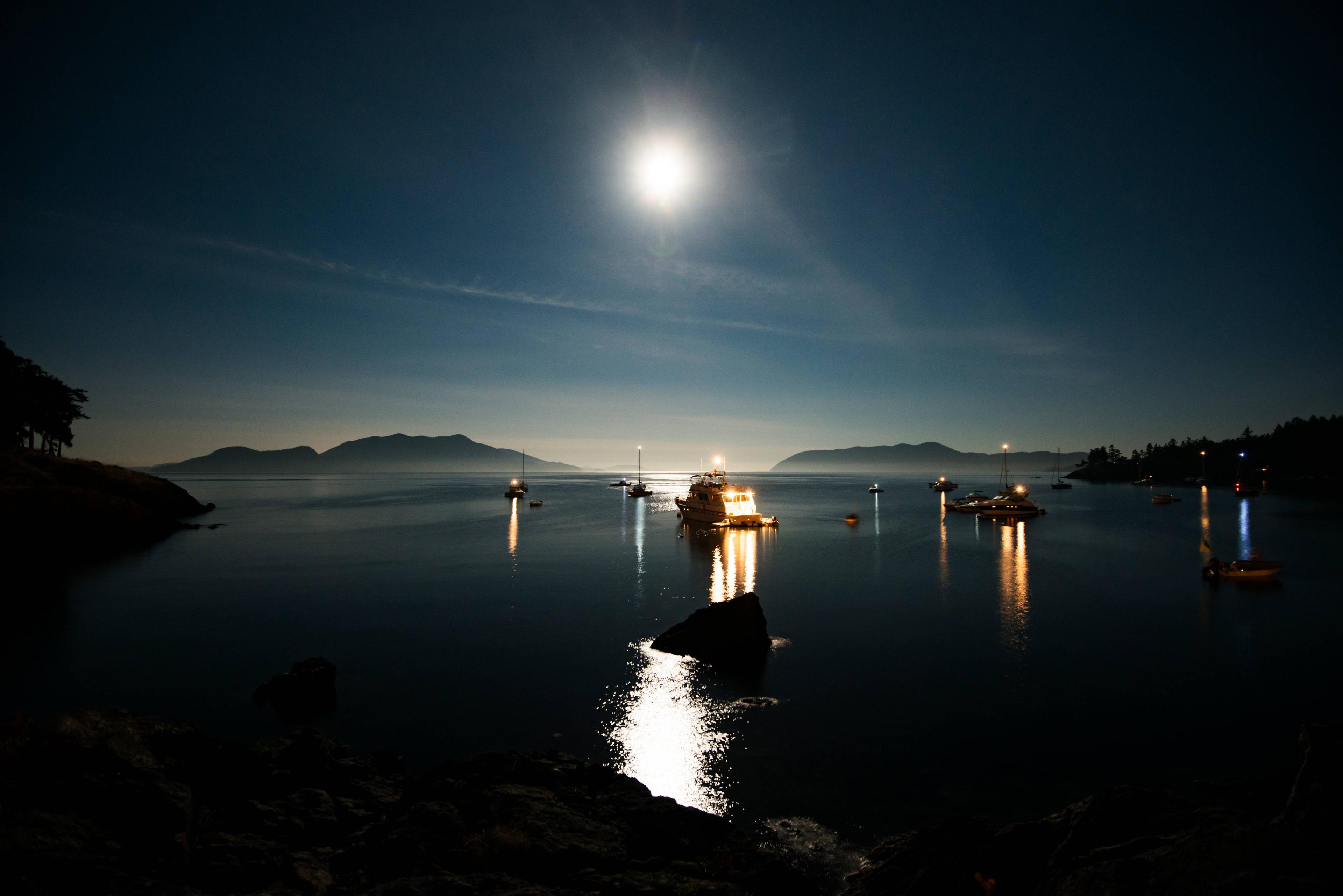
Boat navigation light types and functions lg ...

How Long does it Take to Sail Around the World lg ...
Oct 04, 2021
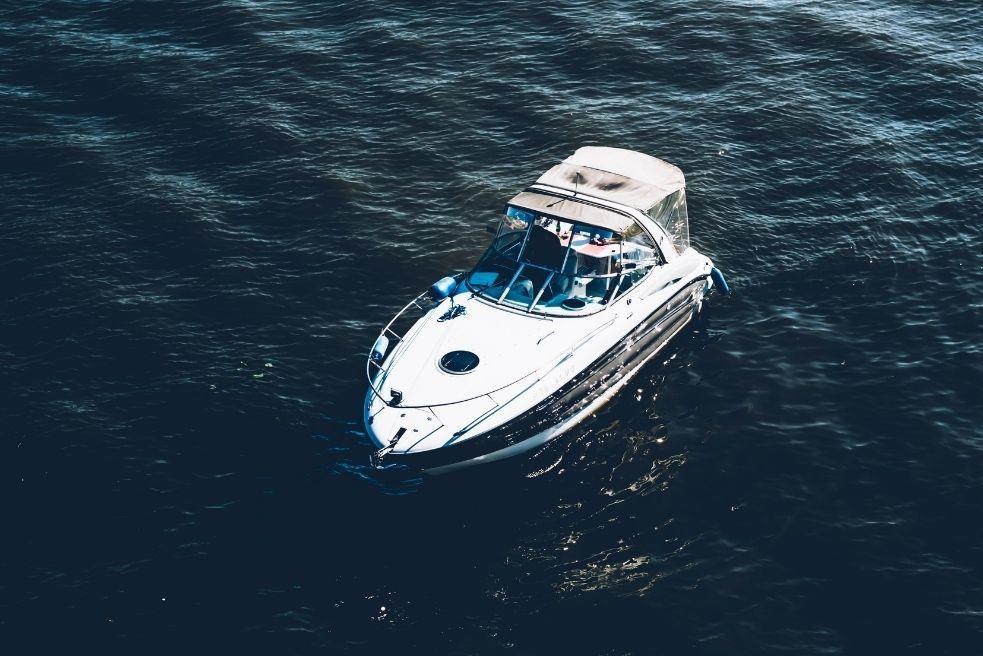
What are some Fun Things to Bring on a Boat lg ...
Oct 01, 2021
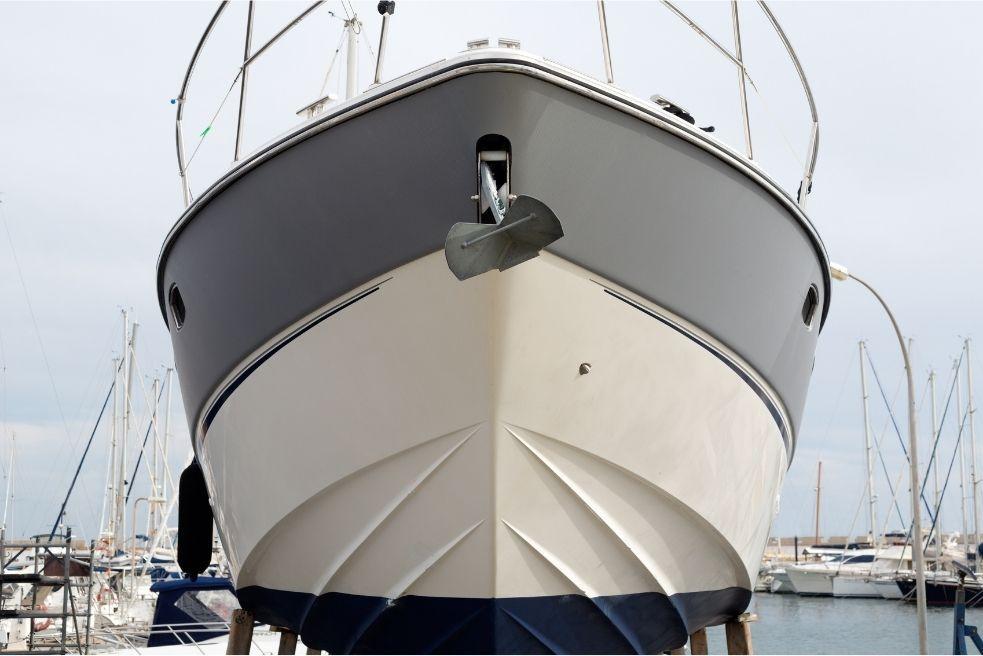
The Proper Term for the Forward End of a Boat lg ...
Sep 30, 2021
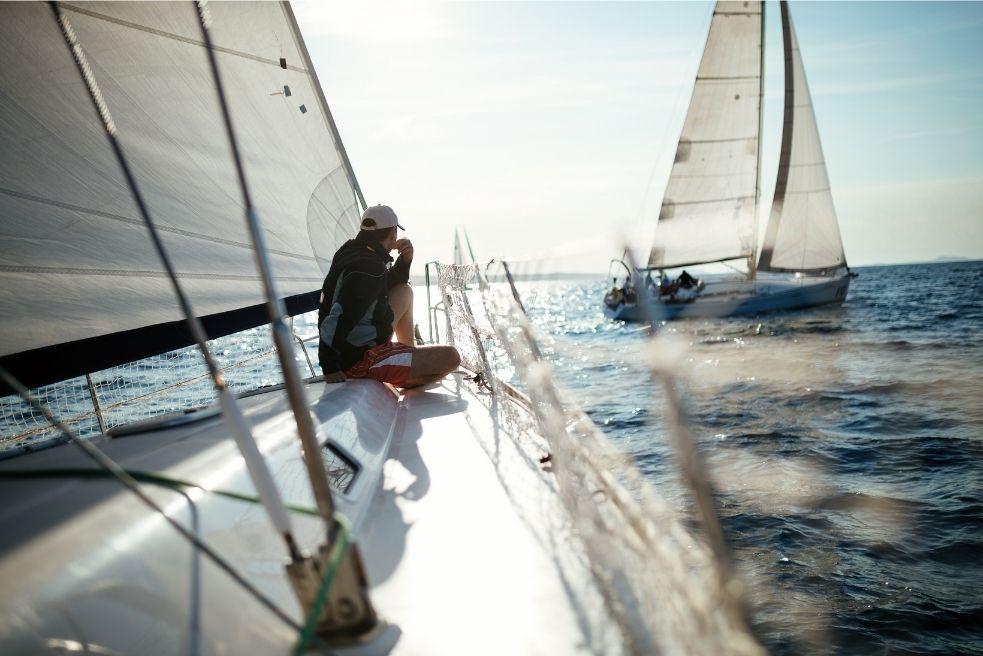
Regular Boat Maintenance Tasks You Should Always Do lg ...
Sep 17, 2021

Berthon Winter Collection

Latest issue

August 2024
In the August 2024 issue of Yachting World magazine: News Few finish a tempestuous Round The Island Race European rules are eased for cruising to France and Greece Olympic sailing…

Yachting World
- Digital Edition

HH44 review: Taking fast multihull cruising to another level
- Toby Hodges
- February 22, 2024
Disruptive, innovative, and contemporary in style and technology, this electrified HH44 takes fast multihull cruising to a new level, says Toby Hodges
Product Overview
Price as reviewed:.
A fast, fun catamaran that is safe and comfortable may once have been a pipe dream, but is now perhaps the biggest growth market in yachting. However, creating a performance catamaran at or below 45ft is no easy task. It’s an elusive sweet spot because many buyers think they want what the 50ft+ catamarans offer but in a more manageable and, crucially, affordable package.
Meanwhile from the designers’ and yards’ point of view, that’s not so easily achieved – in particular the challenge of keeping a boat light enough to perform, yet offer all the amenities expected of multihull living.
Then try building something on which you can still turn a profit? That focusses the mind. It could be argued that those meeting this challenge most creatively and effectively at the moment are HH, led by experienced boatbuilder Paul Hakes, and in particular his son James – the 44’s lead designer. They describe this new baby of their range as ‘groundbreaking’.
The HH44 seemingly combines all the latest thinking around performance and technology while also adding a liberal sprinkling of fresh ideas, including being the first production catamaran to feature parallel hybrid propulsion. And all this while still being capable of ocean cruising.
Can such a feature-rich fast cat work harmoniously at this size though? I was keen to find out. A quick first sail during European Yacht of the Year trials in the autumn provided a taster and I hope a lengthier test will follow to draw more conclusions. But it was enough to get an idea of what works, what doesn’t, and get a feel for why this model has sold in such extraordinary numbers (over 30 off the plans alone).

Fresh thinking: unlike earlier Morrelli & Melvin HHs, the 44 has been conceived and designed fully in-house by James Hakes
A speed date
First impressions are of a very modern looking fast cat, more like a 50-footer perhaps that’s been squeezed a little, with length lost out of the ends. So there’s noticeably high freeboard and good bridgedeck clearance (over 3ft). The sporty look is set off by razor sharp bows and an attractive coachroof line, which extends right back to cover the aft helms. Next up you notice the powerful carbon rig, while even from the dock you can appreciate the formidable amount of natural light being encouraged in through the massive amounts of glazing in the coachroof and hull portlights.
The choice to go with aft helms triggered other design decisions, including keeping the boom (and centre of effort) low, and allowing HH to use the whole roof for a solar array. This resulted in a market leading 4.2kW of panels as standard.
Go to step aboard and you instantly appreciate some of the innovative features. For starters, with the boat moored side-on, you can actually step aboard via a gate in the aft bulwark, rather than having to perform some sort of gymnastic hurdle onto the transom steps, as you do on most high freeboard catamarans today.

Furling headsails set on a carbon longeron. All lines are led to the cockpit. Photo: Ludovic Fruchaud/imacis.fr/EYOTY
This leads us on to one of my next favourite features: the folding transoms. Rather than the typical open transom steps that any clumsy crewmember, inquisitive child or pet can fall down and out of, the HH has lowering platforms which serve as a bathing platform, protect those aboard from falling out and, crucially, prevent a following sea from pooping the cockpit. And when you are helming from that far aft, this will be of real comfort.
Washboards are a popular option for many offshore cruising cats, but typically look like an afterthought and are used sparingly, where this is integrated into the design in a seamless fashion. Operation is also pretty neat: a line is led forward through the bulwarks to aside the helms, allowing a powered winch to be used. These lifting platforms also add extra usable space when folded down. The downside is they make the transoms look a bit high and, well, sawn off.
Smooth moves
We pulled away from the dock – in silence. The HH44 was designed from scratch to incorporate parallel hybrid propulsion. Not only do these ‘EcoDrives’ offer silent, fume-free motoring, but they can also hydrogenerate while sailing – more on that later.

Huge forward facing opening windows provide formidable through-flow ventilation to the interior. Photo: Ludovic Fruchaud/imacis.fr/EYOTY
The test boat was the more popular and expensive Sports Cruising (SC) model, which is built in carbon epoxy and features C-shape carbon daggerboards, a Marstrom carbon mast and these EcoDrives as standard – 80% of orders have been for this, while an Ocean Cruising (OC) model is also offered with a gelcoat finish, aluminium mast and fixed keels.
Swing pedestals are used each side to allow the helmsman to steer either with an outboard view or from a more protected position beneath the bimini looking through the coachroof windows. This is an increasingly common practical feature on today’s catamarans and one fitted on the first HH66 a decade ago. It also allows you to free up some space when needed. Equally the fold down helm seats each side can be kept out of the way unless needed and while these do offer a nice perch, they are a little low for maintaining clear sightlines.
Once the sails go up you can quickly see why HH has incorporated such features as there is a lot going on in these aft quarters. You find yourself regularly swinging the helm over to get it out the way to work the winches. And yet there are still blind spots from the helms with pedestals canted – a drawback of having low helms right in the quarters.

Easy side boarding access. Photo: Ludovic Fruchaud/imacis.fr/EYOTY
Sailing upwind with the Doyle square-top main and Solent set, we had a long beat into 11-15 knots true wind, making 7.5-8.5 knots against an awkward swell at 40° the apparent wind. Lining up against other yachts around us proved these were not far off performance monohull speeds and angles.
While beating into an ugly, sharp 2.5m swell is not what most owners might choose, it’s something all need to do at times and proved helpful to get a feel for the HH’s manners. It resulted in a predictably awkward twisting motion aboard, however the fine bows did cut through the swell well, keeping speed up, and the high freeboard kept the deck dry. It was also noticeably direct on the wheel and responsive to sail trim (this despite the traveller being locked in a central position after the line driver developed a problem earlier in the week).
We bore away and set a top-down gennaker, increasing average speed to 8.5-10+ knots depending on the swell angle. Again these are respectable figures considering a breeze of only around 11 knots apparent. The polars suggest double figures should be easy to maintain when reaching in anything above 12-14 knots true. I felt a clear difference in small wind increment gains. This is a stiff yacht, which reacts quickly to puffs – you really feel that extra couple of knots as the boat accelerates – while Cyclops Marine sensors help you monitor the loads in the rigging, which is reassuring.
In terms of operation the HH has been set up to be completely controlled from the helms. The upgraded, powered winches on the test boat can be remotely operated with foot controls, which is particularly helpful for short-handed work and adjusting the 5m-long daggerboards.

sporty, compact nerve centres leave good cockpit space. Single panel sliding doors, aft windows swing open and there is no mullion between them. Photo: Ludovic Fruchaud/imacis.fr/EYOTY
Moving forward the decks are a lot cleaner, thanks to all running rigging led through line tunnels underdeck (even jib sheets). Toerails and high stanchions give a good feeling of security, while comfortable, grippy Eva foam decking comes as standard all over the deck. Foam decking has been used a lot on race boats in recent years and offers an appealing solution for cruising boats as it’s so comfortable under foot, easy to clean and doesn’t get hot like teak or teak alternatives. A question mark perhaps remains over its longevity and durability.
See the light
Such is the extent of the glazing and natural light encouraged into the HH44, it’s almost as if there is no inside/outside divide. Granted, there is a particularly glossy white decor on this first model, which helps emphasise that brightness (many other colour and trim combinations are offered), but the real key lies in the size of the coachroof windows.
The SC model has carbon epoxy infused hulls with E-glass decks and foam-cored furniture, essentially a highly stiff construction technique which also allows for the two huge tempered glass opening windows. As well as an overhead and two central hatches, these massive Lewmar windows provide phenomenal ventilation at anchor.

Over 2m headroom in the particularly bright and well ventilated saloon and galley. Photo: Ludovic Fruchaud/imacis.fr/EYOTY
The bridgedeck layout is ideal to benefit from all this natural light and ventilation too, with its large forward-facing navstation and saloon, and a galley which seamlessly links to the cockpit. In the hulls it’s a three cabin layout only, but there are some choices in the forward starboard cabin, which can be a compact double, a Pullman or a utility cabin. It’s here where you see the prime payoff of having a performance cat, with ultra fine bows and large daggerboard casings stealing precious volume.
Parallel hybrid power
The aft berths lift on struts to reveal the engine bays below. At first these look like conventional 30hp Beta marine diesels, before you notice the water-cooled electric motors bolted on their aft ends. These act as electric drives, high powered alternators and hydrogenerators.
This EcoDrive system was designed to provide the key benefits of an electric boat, without sacrificing the backup of diesel engines. So essentially, they “piggyback on reliable normal diesel engines”, says Paul Hakes. The diesels can become two DC generators, putting 10kW into the battery bank while motoring, or the props can spin to charge while sailing.

Plenty of light and headroom plus inviting doubles aft, but volume is lost forward with the fine bows. Photo: Ludovic Fruchaud/imacis.fr/EYOTY
The crew used only the electric propulsion to get the HH44 in and out of Port Ginesta multiple times per day that week. The 10kW electric motors can provide 1.5 hours propulsion at max thrust without charge – at which stage you can run a diesel. So effectively you end up having four engines, HH reasons.
The 840Ah lithium ion battery bank is large enough to run AC overnight without running an engine. High load items are on 48V while 12V systems use a DC to DC converter.
When you consider the high level of competition, such as the Balance 442, the Outremer 45 and the new Seawind 1370, the HH44 is the highest end in terms of cost and exotic build. The SC is the only one in its class to have carbon fibre hulls as standard, including carbon rig, bowsprit, daggerboards, and rudders, while the electric drives, 4.2kW of solar and 48V battery bank etc all come as standard too. I also like how HH’s price list labels every extra with its weight; so if you want full aircon in the boat, for example (a strange choice with this much ventilation), it’s a whopping 200kg extra.

43.2kWh of lithium ion 48V house batteries can be charged by solar, the diesel motor and hydrogeneration under sail. Photo: Ludovic Fruchaud/imacis.fr/EYOTY
James Hakes tells me they wanted to design the 44 in-house for multiple reasons: “It has so many new details not attempted before, and we needed very tight control over the design to execute them correctly.”
HH has “a lot of firepower to throw at design issues to rapidly iterate dozens of ideas” and needed to design it to be easy to build.
While HH’s production so far has been in Xiamen, China, the popularity of the HH44s and new HH52s is such that a new manufacturing facility is now running in Cebu, Philippines, which will help increase capacity to around 30 HH44s a year. This is also not a bad place for trial/shakedown sails or to start multihull cruising!
If you enjoyed this….
Yachting World is the world’s leading magazine for bluewater cruisers and offshore sailors. Every month we have inspirational adventures and practical features to help you realise your sailing dreams. Build your knowledge with a subscription delivered to your door. See our latest offers and save at least 30% off the cover price.
The HH44 certainly packs in the attractions. A fast and sporty carbon cat with efficient daggerboards that’s reactive and fun to sail, with a bright modern interior. It boasts the most sail power and highest performance ratio in its class, so cruisers will need to handle this hull-flying capable cat with care. There’s as much light and ventilation as you could wish for, renewable energy, silent power yet with the reassurance of diesel back up, all topped with a generous serving of clever ideas on deck and in the cockpit. However, you pay for all this... It may have the benefit of being a more manageable size but it’s still a 50ft+ cat in price. As mentioned, though, what comes as standard is seriously impressive. While I have enjoyed sailing other aft cockpit cats before, I did find the helms on the HH44 a bit crowded and with blind spots – but I’ll reserve full judgement on that for a longer trial please! So while HH’s new baby is not perfect, it is quite brilliant. And after all, who would buy such a boat for marina hopping? This is for long passages, tradewind sailing and tropical anchorages, where it’s sure to turn heads. Mark this as your must view or sail cat for 2024.
- BOAT OF THE YEAR
- Newsletters
- Sailboat Reviews
- Boating Safety
- Sails and Rigging
- Maintenance
- Sailing Totem
- Sailor & Galley
- Living Aboard
- Destinations
- Gear & Electronics
- Charter Resources
- Ultimate Boat Giveaway

2022 Boat of the Year: Best Performance Catamaran
- By Cruising World Editors
- December 15, 2021
During and in the four days immediately following the US Sailboat show in Annapolis, Maryland, the Cruising World judges inspected and sailed on 27 boats vying for recognition. Learn more about the boats in our 2022 Boat of the Year »
OK, confession time. When the roster of nominees for the 2022 Boat of the Year awards was released, the contest’s team and judging panel couldn’t help themselves, and quietly put three check marks, little symbols of anticipation, alongside a trio of boats: the untamed cats that would vie for the title of best performer in their class. After all, both Balance and Seawind had entered the winner’s circle in previous BOTY competitions, and it was clear they’d have a serious contender for the throne in yet another player from cat-crazy South Africa, the Kinetic KC54. How’d it go? Let’s just say, nobody was disappointed. The conditions on Chesapeake Bay were ideal for putting the three nominees through their paces, and the trio of scalded cats all acquitted themselves superbly.
For 2022, if anything, the trend for flybridge catamarans is on a major upswing. New cats for 2022 from both Lagoon and Fountaine Pajot continued down that design path, putting an emphasis on living accommodations, not performance. But not aboard the latest Seawind 1600 , a brand originally built in Australia that is now produced in Vietnam. And that suits judge Tim Murphy just fine. “This boat was very dialed in,” he said, “and one place Seawind has always been innovative is with their helms. This one was really great; it was -outboard and aft with great visibility, sort of half-protected where you could step in and out. There was also good access to the boom and mainsail, which you don’t always see on cats. The deck layout was excellent, particularly the forward trampolines. Some cats have lacings with large openings where you can twist an ankle, but these were nice and tight.”
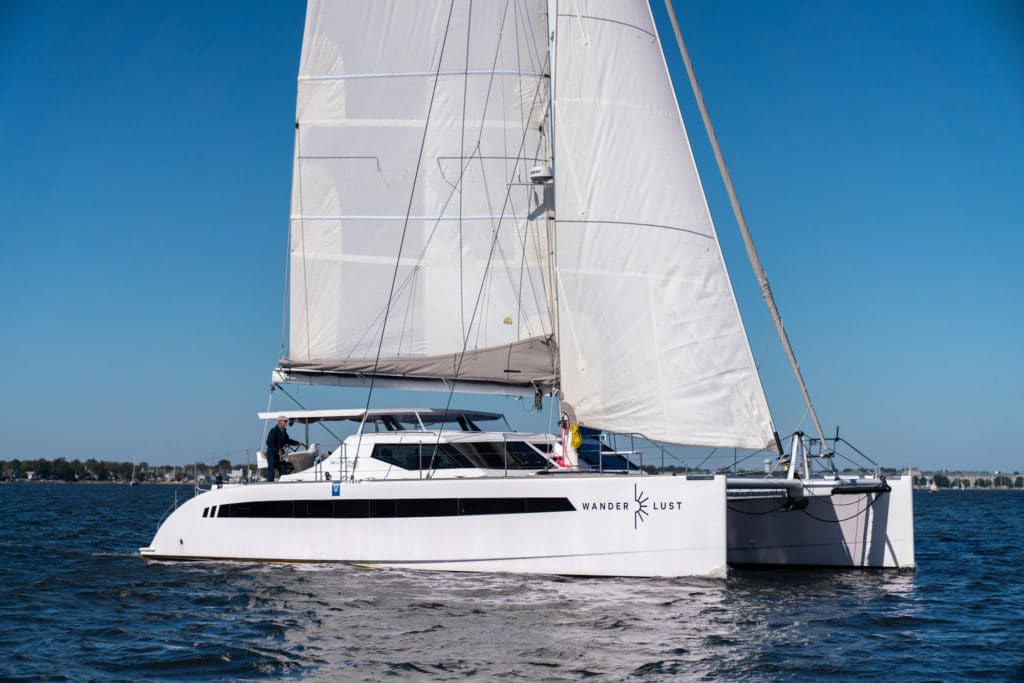
“Compared to other Seawinds that I’ve seen, I was just blown away with it in terms of what it could do and how it performed,” said Ed Sherman. “It’s a fairly conservative boat in terms of technology compared to some of the other boats in the same category, which depending on a potential buyer’s state of mind, could be either a good thing or a bad one. I loved the centralized winch aft which is where all the sail-handling takes place. It’s pretty brilliant for a short-handed crew, and it’s all in a very safe and easy-to-access location that a cruising couple can deal with without scaring the heck out of themselves.”
The Kinetic KC54 is a fresh entry in the cat universe, and we’ll let Tim Murphy get right to the point: “This is a fairly new company that was started within the past couple of years. My breath was absolutely taken away by this boat; it was spectacular. I think it was the best-built boat in the entire fleet. It’s an all-carbon boat, with a foam core, epoxy resin, all infused–fantastic. The whole boat felt integrated. You didn’t feel like there was a conflict between the forces in terms of accommodation versus performance.” With a price tag approaching $3 million, it perhaps should not be astonishing. That was a major factor in evaluating the boat, and while it did not win its class, the experts panel did present it with a Judges’ Special Recognition prize to honor the boat’s overall excellence.
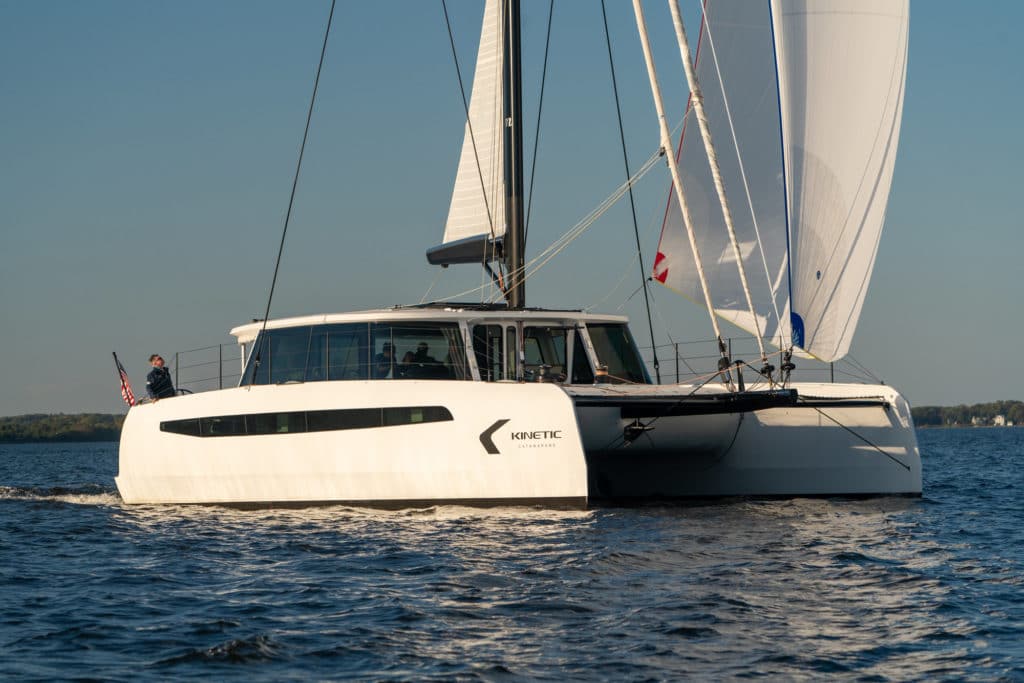
“It was my personal favorite in this year’s contest,” said Sherman. The materials that were used are absolutely the highest quality available in our industry at this point, and it’s a very high-tech boat in terms of systems.” Gerry Douglas was also duly impressed: “This was the Tesla of sailboats. I think that that was their model. In terms of design and execution and technology, it hit all three of those marks. This boat is built without compromise, and what it cost was not an issue, they just wanted to do the best they could in every aspect of the boat. The construction was impeccable, the fit and finish was amazing. There are some very clever design things in the boat, but it all really worked seamlessly.”
With that level of competition, the Balance 482 had a tall order to overcome to win its class. And it did. “The sailing performance was excellent,” said Douglas. “The boat felt really good. The steering was terrific. The structure of the boat throughout was exemplary. Storage is really good. Visibility was good. Ventilation was great. There was even a rain collection system on the cabin top, which is the only one of the boats we looked at had that. It was very well concealed because the gutters formed a handhold going forward. The solar panel installation was also well done. The panels were encapsulated into a fiberglass tray that elevated the deck so the panels wouldn’t overheat. Very clever.”
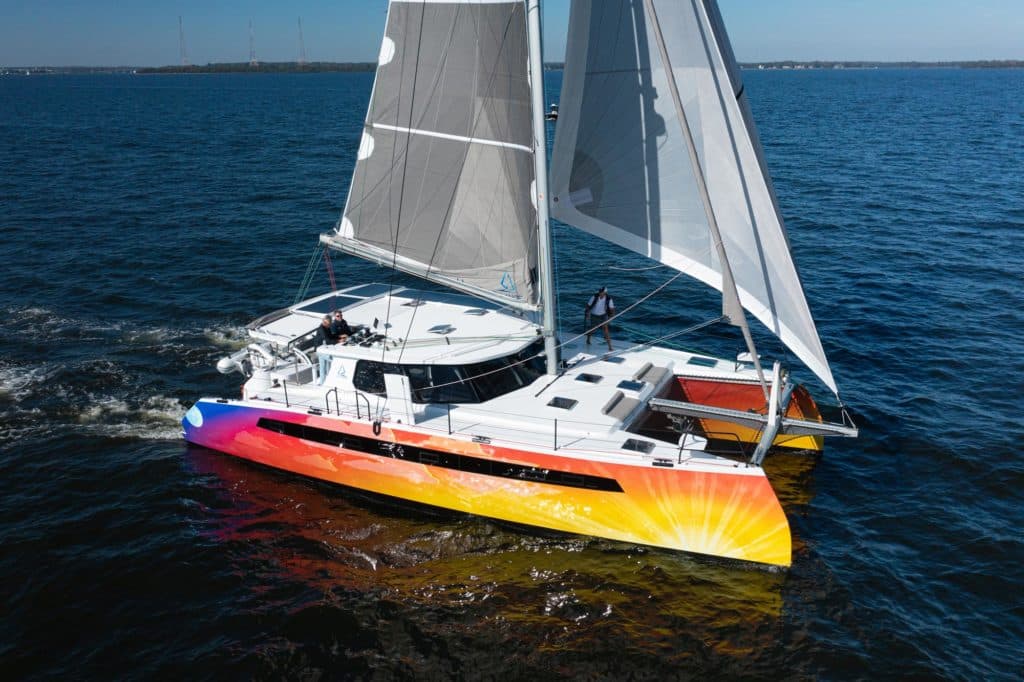
The driving force behind Balance cats is Phil Berman, a world champ at racing beach cats who brought that passion to developing and marketing fully found cruisers. Judge Murphy knows him well: “Phil comes from a very strong view of wanting to see boats that have solid sailing performance. He’s also a strong proponent of daggerboard boats, which tends to be quick shorthand for the dividing line between cats that are more about payload versus cats that are about performance, but not so much where you’re going to fly a hull or break a rudder. There’s a balance within a boat that really performs that you can still live aboard.” A winning balance, it turns out, with the Balance 482 securing its position as the Best Performance Cruiser for 2022.
- More: balance catamarans , Boat of the Year , Boat of the Year 2022 , catamaran , Kinetic Catamarans , print 2022 jan , Sailboats , seawind catamarans
- More Sailboats

Sailboat Preview: Elan GT6 Explorer

For Sale: 1984 Camper & Nicholsons 58

Alubat Updates OVNI Models

For Sale: Little Harbor 63 Ketch
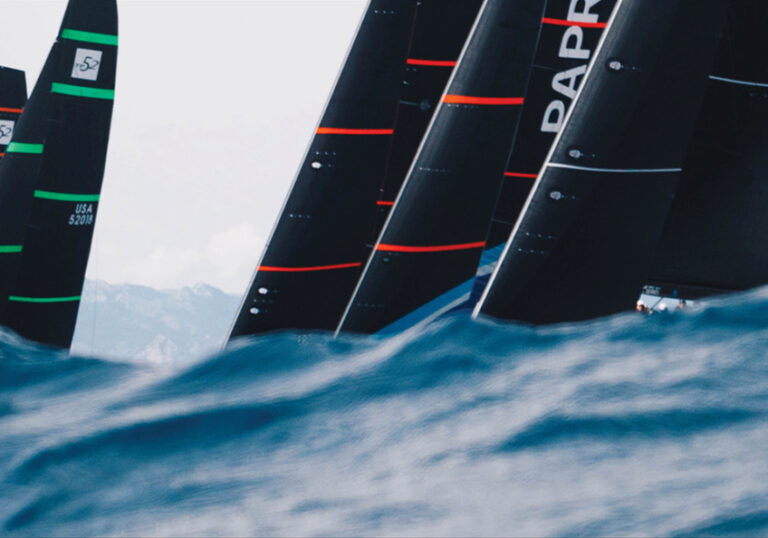
North Sails Parent Company Buys Doyle, Quantum
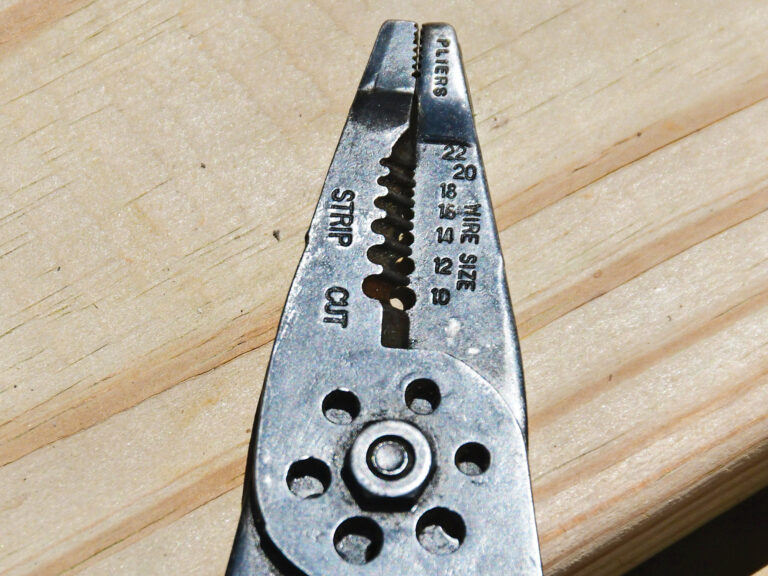
Top Tools for Sailboat Cruising: Must-Have Gear for 2024
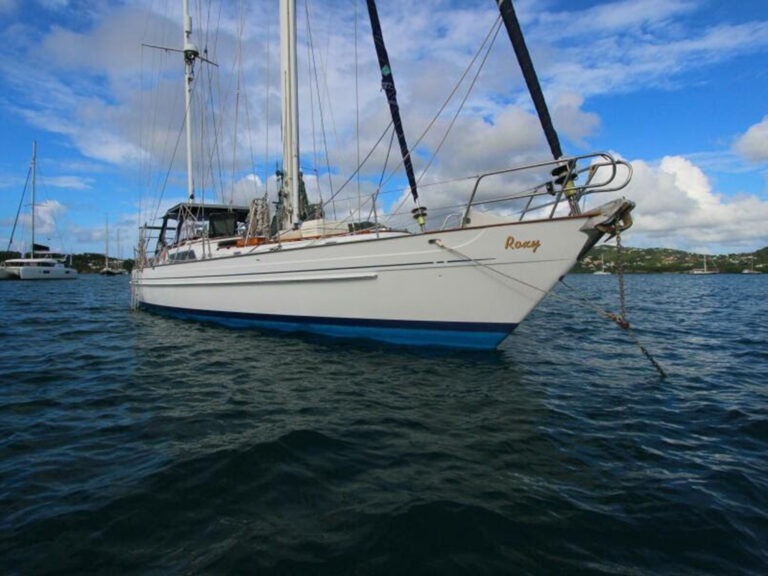
Sailing Avocet : A New Adventure Begins
- Digital Edition
- Customer Service
- Privacy Policy
- Terms of Use
- Email Newsletters
- Cruising World
- Sailing World
- Salt Water Sportsman
- Sport Fishing
- Wakeboarding

The Cruising Catamaran Performance Debate
Which Cruising Catamaran Performs Better…And Does It Really Matter?
A client recently alerted us to a YouTube video posted by a catamaran dealer that is blatantly misleading and inaccurate. If you listen to this dealer, every catamaran manufacturer, other than the Fountaine Pajot brand, is slow, unsafe, not seaworthy and not fit to be a cruising catamaran.
While we agree that the Fountaine Pajot brand is an excellent product (we sell a lot of them), it certainly is not the ONLY good cruising catamaran in the world. There are many products available that are as good and like so many things, when it comes to choosing a cruising boat, it often boils down to personal preference, especially in this category of cruising catamaran.
2022 UPDATE: You will still find some great information below regarding cruising catamarans, especially if you are in the market to buy one. But lots has happened in the Performance Cruising Catamarans category since this post was written a few years ago, like Catana is back in the game with tons of innovation and a fresh new look. In addition to reading this article, be sure to read:
- 2022 Performance Cruising Catamaran Comparison
- We Bought a Performance Cruiser Catana OC 50
Cruising Catamarans Performance
The dealer in the video our client mentioned to us specifically focused on the superior performance of the Fountaine Pajot compared to some of the competing brands in the cruising category like Leopard Catamarans , Nautitech Catamarans , Bali Catamarans , Lagoon Catamarans , and Catana Catamarans .
The fact is that there is very little difference in speed between similarly lengthed cats in this category. All these catamarans are displacement hulls and they pretty much sail to hull speed with intermittent surfing. Therefore, when sailed efficiently, these cats should have very similar performance.
We hear terms such as power-to-weight ratio (sail area to displacement) bandied about a lot by yacht salespeople of the various boat brands as an indicator of performance. While this is definitely a factor and certainly has an effect on acceleration and light wind performance, it is not the only factor. Some catamaran brands will be faster around the cans in a regatta while others will be better when making long passages.
What one should also consider is that when cruising is that a catamaran’s performance will be dictated by sea state as well as wind speed and direction. In light winds, there will probably be a screecher or asymmetrical spinnaker deployed and in strong winds the sails will probably be reefed. This means that in cruising mode, most sail plans are optimized to the conditions. Therefore, when evaluating a cruising catamaran’s performance, there are many factors to be taken into consideration. This is not a simple cut-and-dried argument.
Catamaran Performance Factors & Calculations
To display the different factors and calculations which are relevant when it comes to catamaran performance, we went to Multihull Dynamics for data and pulled some numbers on the two boats most mentioned in this dealer’s video, namely Lagoon and Fountaine Pajot. Here is what we found on the Multihull Dynamics site:
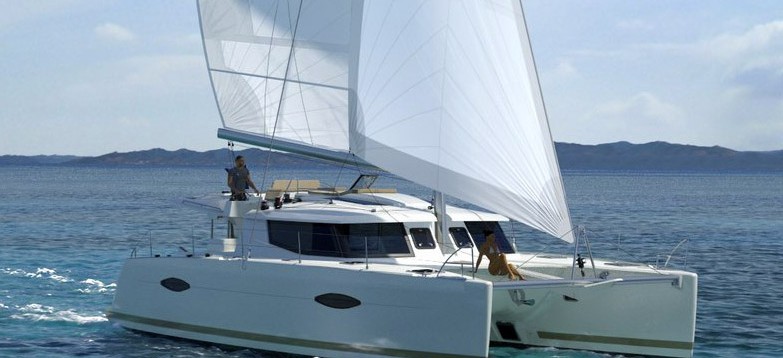
- Base Speed – An empirically derived indicator of the speed a given boat could average over a 24-hour period (best days run) under a variety of conditions. Here again the Lagoon had better numbers with 9.82 knots versus 9.46 knots for the FP Helia 44 – this explains why the Lagoons are so successful on the long Ocean races like the ARC
- KSP – Kelsail Sailing Performance number is a measure of relative speed potential of a boat. It takes into consideration Sail area, Displacement and length at Waterline. The higher the number the higher the speed predicted for the boat. Here the FP Helia 44 at 6.06 had better numbers than the Lagoon 450 which comes in at 6.02 – the Helia is the lighter boat.
- TR – Texel Rating provides a handicap system for widely varying boats sailing together in a race. The formula is essentially the inverse of the Base Speed formula with constants applied to make the results useful. The Texel rating system permits the calculation of time to sail a given distance. Thus a boat with a higher TR can be expected to take longer from start to finish than a boat with a lower TR. The Lagoon 450 came in at 141 versus the FP Helia 44 at 144.
- Interestingly the Leopard 45 came in with better numbers than the Lagoon and the FP as follows: Bruce number – 1.25; Base Speed 10.65; KSP 7.68 and TR 122.
- The numbers for Antares PDQ44 are very similar to the Helia 44 and Lagoon 450.
- Unfortunately there was no data available for the Bali or current Nautitech designs.
*Disclaimer: All data quoted here was derived from Multihull Dynamics. Catamaran Guru offers the details in good faith and does not guarantee or warrant this data.

>>Click on the pictures above or go to Multihull Dynamics website for a full explanation of the graphs.
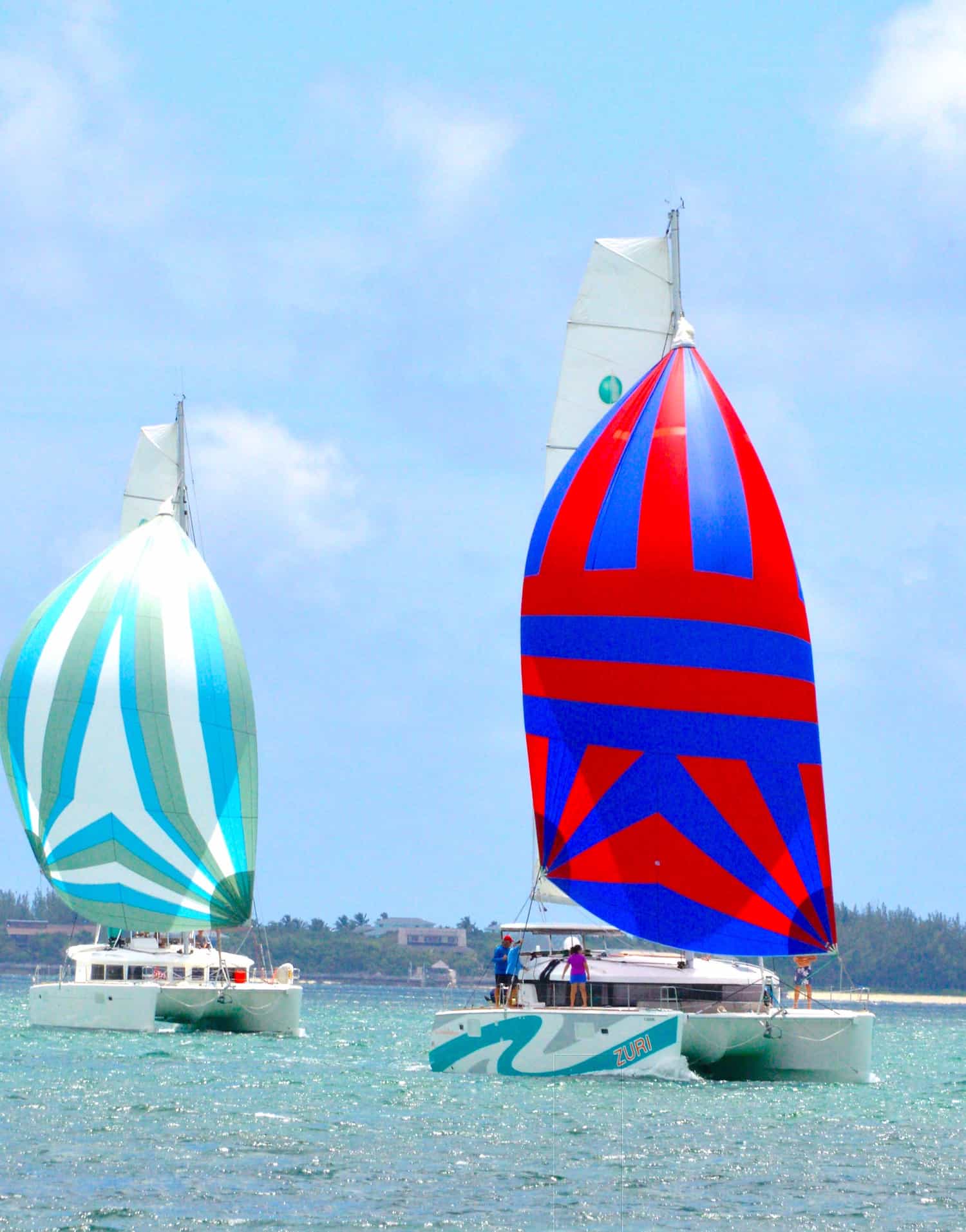
While the Fountaine Pajot dealer touts the superior performance of their brand, actual data shows that the Lagoon brand has won more ARC cruising rallies than any other brand of cruising catamaran. These are hardly the statistics of “just a charter catamaran that sails in 50-mile circles and lacks performance”, as is claimed by this dealer. As an example, check out these ARC and ARC+ rally results in which Lagoon consistently features well:
- Spirit, Lagoon 450 Flybridge – 1st Multihull
- Cat’Leya, Lagoon 52 Sportop – 2nd Multihull
- Sea to Sky, Lagoon 450 – 3rd Multihull
- Dreamcatcher, Lagoon 52 – 4th Multihull
- Sumore, Lagoon 570 – 5th Multihull
- Opptur, Lagoon 500 – 6th Multihull
- Lea, Lagoon 52 – 10th Multihull
- 2015: 380 Havhunden, first in ARC+ Multihulls Division in corrected time
- 2013: 620 Enigma, first in ARC+ Multihulls Division in corrected time
- 2012: 560 Feliz, first in ARC Multihulls Division in real time
- 2011: 560 Blue Ocean, first in ARC Multihulls Division in corrected time & third in ARC Multihulls Division in real time
- 2010: 620 Lady Boubou, first in ARC Multihulls Division & 11th overall in real time
This is NOT an indication of how good or bad one boat over another is, but rather an indication of dealer bias ! We are sure this debate will continue but it is our considered opinion that one should look at the overall boat and not be blinded by issues that might or might not be manufactured by over-zealous sales people. As we have said before, it often comes down to personal preference.
Performance Cruising Catamarans

High-performance cruising cats are becoming more popular and there are a lot more on the market than even just five years ago, but it’s not for everyone, especially if you are not a skilled sailor. Daggerboards and bigger rigs require more skill and are not for the average sailor.
We’ve been racing on and off for years on different catamarans and we’ve always had great fun sailing and surfing at speeds of 15+ knots. But as fun as that is, it can be a white knuckled, wild ride in bad conditions and can leave the crew tired and tense because one has to really pay attention. At these speeds any mistake could be catastrophic since there is so much load on the rig. So, make no mistake, sailing fast in less than good conditions is hard work, particularly when you sail shorthanded.
When only the two of us cruise along on our own boat, we really appreciate the pleasure of gliding through the water at 8-10 knots, relaxed and comfortable. Would we love to be able to coast along at a good clip in very light winds? Sure, we would love to own an Outremer or Catana! But that type of performance cat will cost us probably twice the price of a regular cruising catamaran. Is it worth the money for the average cruiser? Debatable.
With the advancement of technology, more people will eventually be able to sail these performance cats skillfully and will be able to afford them as costs come down but until such time, we believe that the average sailor can very happily sail at fair speed toward their destination, safely and relaxed on an average cruising catamaran as discussed above. The fact is, one or two knots of speed, which is what the difference between these cruising cats MIGHT be, will not make or break your passage.
2020 Update: At the time of writing this article, we owned a Lagoon 450 SporTop , not a rocket ship by any means, but a fair sailing boat. We now own a Bali 5.4 catamaran that is significantly lighter and faster in general as a cruising catamaran and we love the extra speed. However, I have to say that this boat is less comfortable underway than the heavier Lagoon. It is more buoyant, a little more skittish and tend to surf much quicker. So one has to pay more attention in more vigorous conditions. It can be tiring on a long passage, but it sure is fun!
Stephen says, “I personally like the Bali because it is a more lively boat and sails very well – when we picked our boat up in France it was completely empty and bobbed like a cork which we were not used to because our Lagoon was a much heavier boat. Since we have now equipped her with all the world cruising equipment as well as big dinghy, etc. she is a little heavier and a lot more comfortable. It is a fact that weight affects performance – the lighter the boat the better performance one can expect. We flew across the Atlantic when we were nice and light but the boat still performs well now that she is at full cruising weight”.
The Bottom Line
So, to conclude this argument, dealers are always somewhat biased about the products that they represent. Manufacturers go to great lengths and spend a lot of money training their dealer networks to be knowledgeable about their products and represent them well with the buying public. They rightfully expect loyalty from their dealers and expect them to present a positive image to the consumer. We all get that. However, when dealers trash and misrepresent their competition with manufactured issues in order to sell their own products, they do a disservice to the buying public and the industry in general.
We want to hear what you have to say! Tell us about performance on your cruising catamaran and also check out our article on why we chose our own catamaran .
Reminder! Check out these fresh updates on performance catamarans:
Contact us if you have any questions regarding catamarans, Fractional Yacht Ownership or our Charter Management Programs .
Estelle Cockcroft
Join our community.
Get the latest on catamaran news, sailing events, buying and selling tips, community happenings, webinars & seminars, and much more!
13 thoughts on “The Cruising Catamaran Performance Debate”
Thanks for a sober writing. I am the owner of the Lagoon 380 Hahunden, and agter with you. I have a spreadsheet with 75 different cruising cat models and the elapsed times in 29 races, and there is not much difference in perforfance. Can send it if uou want. Greetings.
I would like to see that spreadsheet for sure!
I own a Venezia 42′ and if my boat is part of your spreadsheet I would especially love to see it! Could you please send me a copy even if it’s not on there?
To discuss performance and Lagoon or FP in the same sentence is crass. These are not performance Catamarans, purely floating caravans. They have no pretence to performance only cruising capacity, any indicator of performance is purely coincidental.
I own a Privilege 495 and wouldn’t trade it for any other cat.
Hi Jack, I am interested in the performance of your boat. I understand that mini keels decrease performance considerably. Thanks Di
I would like to point out that the data that you use from Multihull Dynamics is completely flawed due to an inaccurate displacement value. Multihull Dynamcis inexplicably lists the Helia at 14 tons, while Fountaine Pajot and your site list the boat at 10.8 tons. This is quite a big difference and skews all the metrics calculated by the site. The Helia is obviously a lighter boat and performance in catamarans starts with weight, so it is undoubted that the Helia will be more lively than the Lagoon. I totally get your point that that does not mean that it will be more comfortable. Second, on the ARC data front: my father sailed twice across the same route in the Atlantic in the last 10 years and I’m very familiar with the conditions. The trade winds there tend to be rather lively and in those conditions weight will matter less. I would expect to see different results in lighter conditions. All that said, the dealer in question is undoubtedly doing their marketing with an agenda.
Hi Ivan, thanks for your input regarding the Helia 44 weight discrepancy. We are aware of this and it holds good for both vessels. You will note that the Helia 44 shows a displacement UNLOADED of 10.8T while the Lagoon 450 shows an UNLOADED displacement of 15T. In order to get accurate performance numbers we assume that Multihull Dynamics have used a number that represents the LOADED weight of both vessels. This means that for the Helia 44 it went from 10.8T to 14.1T (an increase of 3.3T) and in the case of the Lagoon 450, it went from 15T to 20T (an increase of 5T), since it a larger boat overall with more capacity. Based on the above I think we can safely say that we are looking at a fair and accurate comparison. Your input is really appreciated and we are always open to comment and correction to ensure the information we put on the site is accurate and fair.
Thank you for the clarification on displacement.I do see that they have bumped up the Lagoon 450 displacement as well so that’s a fair comparison. I wish they published that clearly because it changes numbers quite a bit as all manufacturers typically post the weight of their boats unloaded.It looks like the Lagoon makes up for the greater weight with a bigger sail area, so that will probably add up to greater effort needed to manage those larger sails but with modern systems, all these things can be managed. Thank you for the clarification and your insight overall.
I think the misconception people have about “performance” catamarans, is that the reason sailors gravitate towards them is not their speed, it is their ability to sail in light air. If you have a catamaran that will sail at windspeed or close to it in 5-8 knots, you’ll actually sail instead of cranking up the diesel. Those true performance catamarans capable of this that also have all the creature comforts of the Helia/Elba45 or Lagoon450/46, are 50+ feet long, and twice the price unfortunately.
You are so right! Well said.
Good article! For me, the weight includes all the stuff you are taking on a month long (or longer) journey (Full fuel +extra cans, 2 sups, dive tanks and compressor, 4 cases of wine…). My opinion is that the performance cats hull design suffers more when loaded to the gills. Ride quality is also very important and is often glossed over by the performance cat advocates.
You are completely right and that was part of strategy when we raced across the Atlantic with the ARC rally. We knew that all the cats would be loaded to the max for the crossing which no doubt makes them less efficient sailing cats. Fortunately on the Bali 5.4 the buoyancy calculations is for a fully spec’d and loaded boat. So we left and sailed like a bat out of hell right off the bat and we were sailing very efficiently, making 200+ NM distances every day. We figured that as the other cats start using their fuel, water and supplies, they would sail a little more efficiently but by then we would be well ahead of the pack, and it worked. We surprised even the very fast performance cats and all the while eight of us onboard were sailing in complete comfort and were eating gourmet meals three times a day! LOL- Of course the TS’s beat us but it is hardly a fair fight. LOL
Leave a Comment Cancel Reply
Your email address will not be published. Required fields are marked *
Save my name, email, and website in this browser for the next time I comment.
Recent Posts

Top 10 Reasons to Sell (and Sail) Your Catamaran in Annapolis, MD
We have a new home in Annapolis! The office is located in Annapolis, Maryland
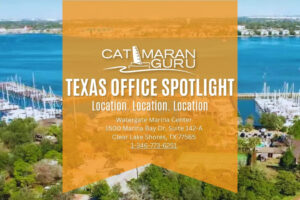
Top 10 Reasons to Sell (and Sail) Your Catamaran in Texas
Our Texas Office is located in the Watergate Marina Center in Clear Lake Shores,
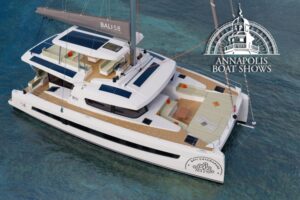
Annapolis Boat Show 2024
Meet with our team! Want to learn more about the Bali and Catana

Exploring the Catana OC 50 Catamaran: A Comprehensive Overview
The Catana OC 50 Catamaran, the latest addition to the Catana Ocean Class series,

For more than 30 years, we have been a part of the catamaran community and created Catamaran Guru™ to encourage and educate all the aspiring sailing out there. We understand the dream of traveling the world by catamaran and created a one-stop-shop to make that dream a reality for you.

- Stephen & Estelle
- Testimonials
Get Started
- Yacht Sales
- Used Yachts
- Charter Management
- Boat as Business Programs
- Seminars & Events
Better Sailing
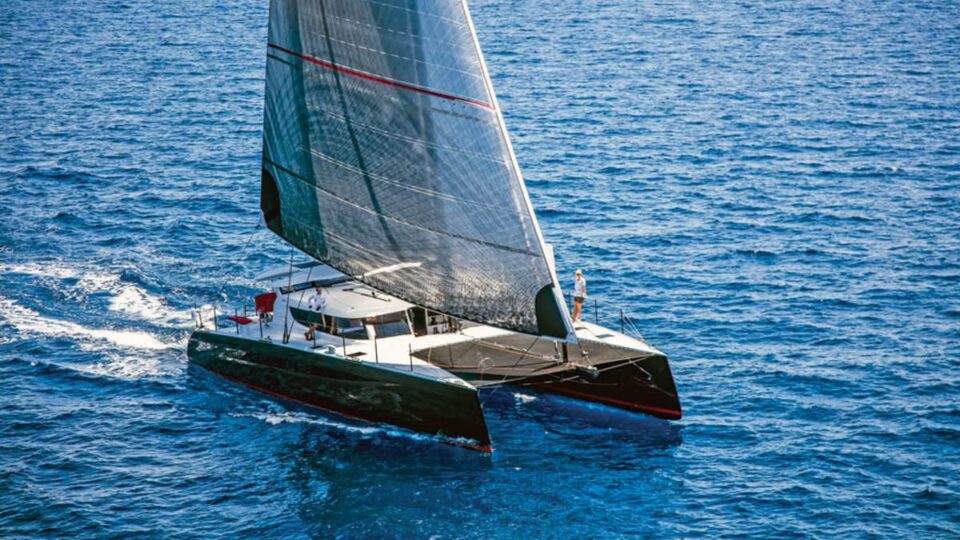
How Fast Do Catamarans Sail? Average Sailing Speed of a Catamaran
In most aspects, sailing a catamaran is very similar to sailing a monohull. If you learn to sail on a monohull then most of the skills are transferable. But, there are a couple of subtle differences that we will analyze further in this article. A catamaran is generally more balanced on the water and can be faster than a multi-hull vessel. And, cruising on a sailboat with a cat hull will be much faster than cruising on a sailboat with a monohull. Therefore, a catamaran hull is able to achieve the speeds of a racing monohull and is also more comfortable to sail on.
A tri-hull is even much better as they’re designed towards the performance end of the spectrum. And that is why they double the speed of a racing monohull. So, let’s analyze this subject further in this article and see what’s the average sailing speed of a cat. Follow me!
Catamaran Vs Monohull Speed: Are Cats Faster than Monohulls?
Not all cruising cats are always faster than an equivalent length monohull. But, many well-designed and balanced multihulls can easily surpass the speed of their monohull cousins. And, it’s not fair to mass all cats into one example, but performance cruising catamarans like the Nautitech or Neel trimarans distinguish from others. Their narrow waterline beams, hull chines, deep and fine keels, and rudders as well as efficient sail plans will typically be faster than the average cruising monohull.
“The fun of sailing is proportional to the speed of sailing”, as an American designer, L. Francis Herreshoff, said. And, it’s basically true because when we sail and see another boat heeling in the breeze, we also feel we want to do the same. This is because for many sailors speed means much more than just fun. You should, however, consider keeping your cat as light as possible if you want to maximize speed. I know that keeping your sailboat light is difficult but it’s of importance if speed is your main goal.
Keep in mind that a boat’s speed has won wars and has also been a contributor to safety. In the past, a fast warship was able to outmaneuver its adversary or escape from a boat with more firepower. And just as proven in history, the speed of a sailboat is important and provides a faster boat with more options.
Monohull VS Catamarans Differences
- When tacking, you must work hard to keep your speed consistent in the tack and always ease the mainsheet to avoid “windvaning.” When the larger mainsail on a catamaran attempts to turn the boat back towards the wind, this is known as windvaning.
- On a monohull, you must be extremely cautious about an unintended gybe. Meaning that you must gybe much more slowly. On a catamaran, you can take advantage of the increased speed and sustain it while gybing to help depower the main.
- On a monohull, and when winds increase, the boat starts heeling. This automatically informs you that you have too much sail up and it’s time to reef. And, as catamarans don’t heel, you have to be very careful when to reef the massive main. Most of the time, you will throw in the first reef at 18-20 knots of wind speed. The second reef will be put as the wind gets closer to 23-25 knots. The above-mentioned always depend on the size and type of your vessel.
Wind as a Main Factor for Speed
Thanks to tech evolutions in radar, satellite, and computer technology, a five-day forecast is as accurate as a two-day forecast was back in 1980. A multihull’s higher speed also contributes to easier and safer planning of ocean passages around weather windows since exposure time will be less. Moreover, meteorological prediction for shorter periods is far more accurate. Keep in mind that when sailing faster you also introduce the concept of apparent wind to the strategy of efficient sailing.
Multihull speed upwind? Sailing upwind, the catamaran usually experiences more apparent wind across the deck since it’s sailing faster. Therefore, the sails will feel more pressure, which will make the boat perform even better. And, of course, the concept of apparent wind contributes to the joy of sailing, as it adds another dimension to it. When sailing towards a downwind destination, fast multihulls are able to sail at smaller wind angles. Subsequently, this brings the apparent wind forward of the beam, hence optimizing the angle of attack on the sails.
While cats will fly gennakers, code-zeros, or asymmetric spinnakers, monohulls mostly set symmetric spinnakers to the poles. And most importantly, their boat speed will often cancel out the true wind and will reduce the apparent wind and performance. The faster the multihull is the more it is able to take advantage of the apparent wind and tack downwind towards its destination. Although it might be sailing twice the distance, it will arrive at the downwind mark quicker because its Velocity Made Good (VMG) will be faster.
>>Also Read: How Fast is a Laser Sailboat? Laser Sailboat Top Speed
Performance Characteristics
Bear in mind that cats require four times the power to double their speed. But, a mono-hull vessel requires eight times the power to double the speed. This is due to the fact that a cat has less resistance in the water. However, this is great in terms of conserving and using less energy. Catamarans are also more stable in the water. This stability is effective at resisting heeling or capsizing. In other words, a multi-hull vessel requires four times the force to capsize as a similar-sized mono-hull vessel.
Most of the time, sailing in a catamaran is smoother and facilitates activities that are not always possible on a mono-hull sailboat. In addition, as catamarans have less water resistance, they are generally faster than mono-hull vessels. As their hulls are smaller, this means that they have a smaller bow wave to fight. The bow wave is a wave created by the displacement of water by the bow of a ship. After a certain speed, the boat has to start hauling itself over its own bow wave. Meaning that the larger hull a boat has, the larger its bow wave will be and the more power will be required in order to fight it.
Since catamarans have two small and narrow hulls, they don’t have much of a bow wave. This is one of the reasons they are normally quicker than a monohull vessel of comparable size. Catamarans can travel at speeds of up to 30% faster than monohull boats. Catamarans have the disadvantage of taking longer to transform than monohulls.
Lastly, the thing that makes monohulls harder to sail is heeling and smaller spaces. In stronger winds, monohulls tend to heel. This results in making most tasks a bit more difficult to perform. Whether you’re heading forward to reef, trying to winch in a sail, or move about the boat, sailing on a heeling boat is always more difficult. However, cats have extra stability and room, and this allows for much easier movement around the boat as they do not heel. And, for this reason, catamarans are often considered easier to sail.
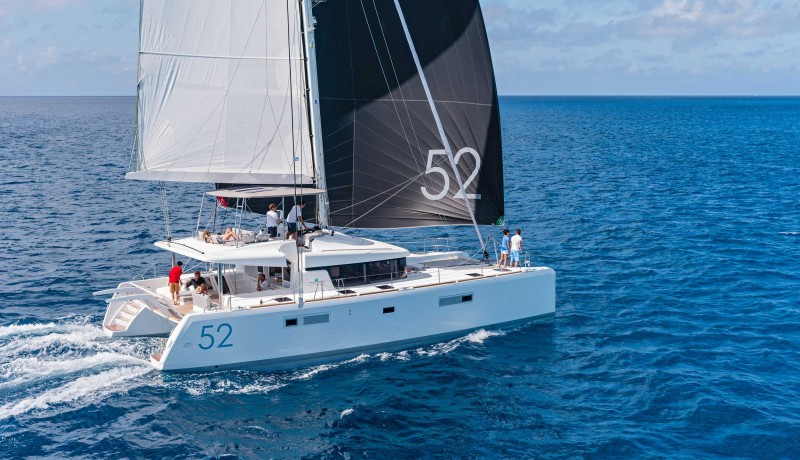
How Fast Are Catamarans Compared To Other Boat Types?
There are two main factors that determine the speed of ships. The first one is the hull type. There are hulls that stay beneath the water more or less than others. But, keep in mind that the less the hull is underwater, the faster it can go. This is due to the fact that the less of the hull underwater, the less the drag created when sailing. The other factor is the length of the boat. And, reasonably, the longer the boat, the faster it can go. Every boat has a maximum hull speed that can’t be exceeded. This can only happen in case the boat can plane on the water’s surface or be lifted on hydrofoils. For most boats, the longer the boat, the higher the maximum hull speed is.
Sailing catamarans typically average about 10 knots while pontoon boats average about 16 knots. As for powerboats, they can average anywhere between 30 and 50 mph. Most average sailboats are designed with monohulls and they average from 6 to 9 knots depending on wind conditions. Generally, sailboats average between 8 and 12 mph, again depending on weather conditions. This includes mono-hull between 6 to 8 mph and cats or trimarans between 9 and 10mph.
Speed and Comfort Considerations For Cats
You have a lot of choices if you choose to buy a catamaran. You have the option of prioritizing speed or comfort. After you’ve decided to buy a catamaran, the type of catamaran you can consider is determined by where you’ll be using it and what you’ll be doing with it. In addition, make sure that you look at what type of water you will be traveling in, your crew members, and what type of speed you want to achieve.
Storage is an important consideration to make before purchasing a catamaran. Due to the beam, or width, of a catamaran versus a regular mono-hull vessel, you are often charged for two slips if you wish to store your boat in a marina. Moreover, catamarans are a great option for those who get seasick because they have a more stable ride and more open air space. You have more windows and visibility since the living quarters are not within the hull and below the water’s surface.
Sailing and power catamarans are both great choices. In addition, for low winds or conditions such as docking in a marina, sailing catamarans may be equipped with backup power engines. Twin-engine catamarans can have more power and precision than mono-hull vessels.
>>Also Read: How Fast Can Sailboats Go?
Main Advantages of Catamarans
- Space! If you want to opt for more interior and exterior space then the two separate hulls of a catamaran can often double the amount of social space than a monohull of the same length.
- Catamarans are far more stable than monohulls. For this reason, they don’t heel when sailing, and are less prone to rocking when at anchor. This factor also contributes to comfortable sailing.
- Catamarans have a shallow draft which allows them to enter shallower areas. Keep in mind that in the South Pacific, most lagoons are 6 to 8 ft in depth. This depth doesn’t allow for monohulls to enter, but a catamaran can easily enter these areas.
- Stability is another big plus of cats. A cat isn’t that susceptible to the effects of wave action and it also doesn’t heal the way a monohull does. Therefore, it’s much easier to walk around on deck and within the interior of the cat while underway.
- In terms of speed, and mostly for downwind sailing , cats are faster than monohulls. This particularly applies to downwind runs, reaches, and broad reaches.
- More light, customizable, and airy living area. On a catamaran, the living space is usually situated in the middle of the boat and built on the bridge deck. But, in a monohull you go down into the hull where it is darker and less airy.
- More storage space and room for extra systems, provisions, and general sailing equipment. These may include air conditioning, heaters, oven, watermakers, generators, larger fridges, and freezers, etc. And, if you’re a liveaboard, then living on a cat is far more comfortable than living in a sailboat. You have more interior, exterior, and storage space as well as stability and speed in terms of sailing performance.
- Many modern cats have flybridge helms. And of course, no monohull achieves this visibility from the helm provided on most modern catamarans.
- The galley, main salon, and cockpit are all located on one level , above the waterline.
- Because the majority of living space is above the waterline , there’s a better flow of ventilation on a cat making the need for air conditioning somewhat less important during the daylight hours.
- When you plan to set sail, you almost never have to rush around stowing stuff or using bungee cords to hold things in place. Except in relatively rough waters, most things stay put.
- Since catamarans lack a large, heavy keel filled with lead, they can float even if they’re holed. Production cats are constructed with so much buoyancy that sinking them is nearly impossible.
- Catamarans are usually easy to dock because you have two motors and two rudders. Additionally, there’s also no need for a bow thruster.
- Most catamarans are able to turn 360 degrees within their own length.
Average Sailing Speed of Catamarans
| Sport Catamarans | 30 knots |
| Cruising Catamarans | 15 knots |
| Racing Catamarans | 45 knots |
| Power Cruising Catamarans | 70 knots |
| Swath Catamarans | 30 knots |
How Fast Do Catamarans Sail? – The Bottom Line
Bear in mind that not all catamarans are created equal. In other words, catamaran speed is relative. The most important benefit of the speed of a multihull is the ability to outrun bad weather. Meaning that you’re able to average 9-10 knots on a catamaran rather than 6-7 knots on a monohull. Subsequently, this will give you more options in your strategy to avoid bad weather. In general, sailing catamarans typically average about 10 knots. Higher maximum and average speeds are what makes cats distinguish as well as their stability. These are the most important characteristics which makes many sailors prefer cats rather than monohull boats.
Peter is the editor of Better Sailing. He has sailed for countless hours and has maintained his own boats and sailboats for years. After years of trial and error, he decided to start this website to share the knowledge.
Related Posts

Atlantic vs Pacific: Which is More Dangerous for Sailing?

Lagoon Catamaran Review: Are Lagoon Catamarans Good?

Best Inboard Boat Engine Brands

Are O’Day Sailboats Good? A Closer Look at a Classic Brand
- Buyer's Guide
- Destinations
- Maintenance
- Sailing Info
Hit enter to search or ESC to close.
- How to book?
- EUR (€) GBP (£) USD ($)
The Fastest & Biggest Catamaran Ferries
Catamaran Ferries are faster than traditional ‘monohull' ferries. These ferries can achieve much higher speeds. In Europe, you have several of these fast catamaran connections that you can take.
Take for instance the ferry on the connection between Hirtshals and Kristiansand:

The Fastest Ferry
The Franciso ferry remains the fastest ferry, built by Incat:
HSC Francisco is a High-Speed Catamaran built by Incat in Hobart, Tasmania. Powered by liquefied natural gas, she is currently the fastest passenger ship in service, reaching a speed of 58 knots (107 km/h; 67 mph). The propulsion is by two GE LM2500 water jets. Connecting Buenos Aires with Montevideo .
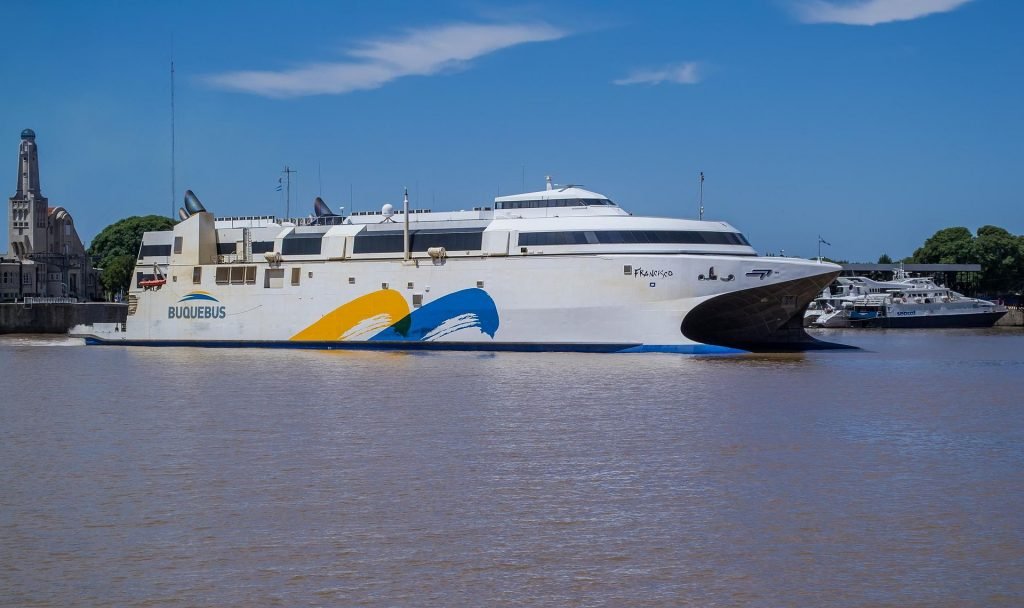
A ferry connection is considered fast if more than 40 knots can be achieved. Only ferry catamarans make this. Boats that are often high and therefore have less friction with the water.
All fast Catamaran connections in Europe
Catamaran connections in Scandinavia and the Baltic Sea
- Aarhus – Odden
- Rønne – Ystad (2 pieces)
- Gothenburg (Sweden) – Frederikshavn (Denmark)
- Gran Canaria – Fuerteventura ( Leonora Christina )
- Hirtshals (Denmark) and Kristiansand (Norway)
- Viking FSTR – Helsinki to Tallinn (Very fast!)
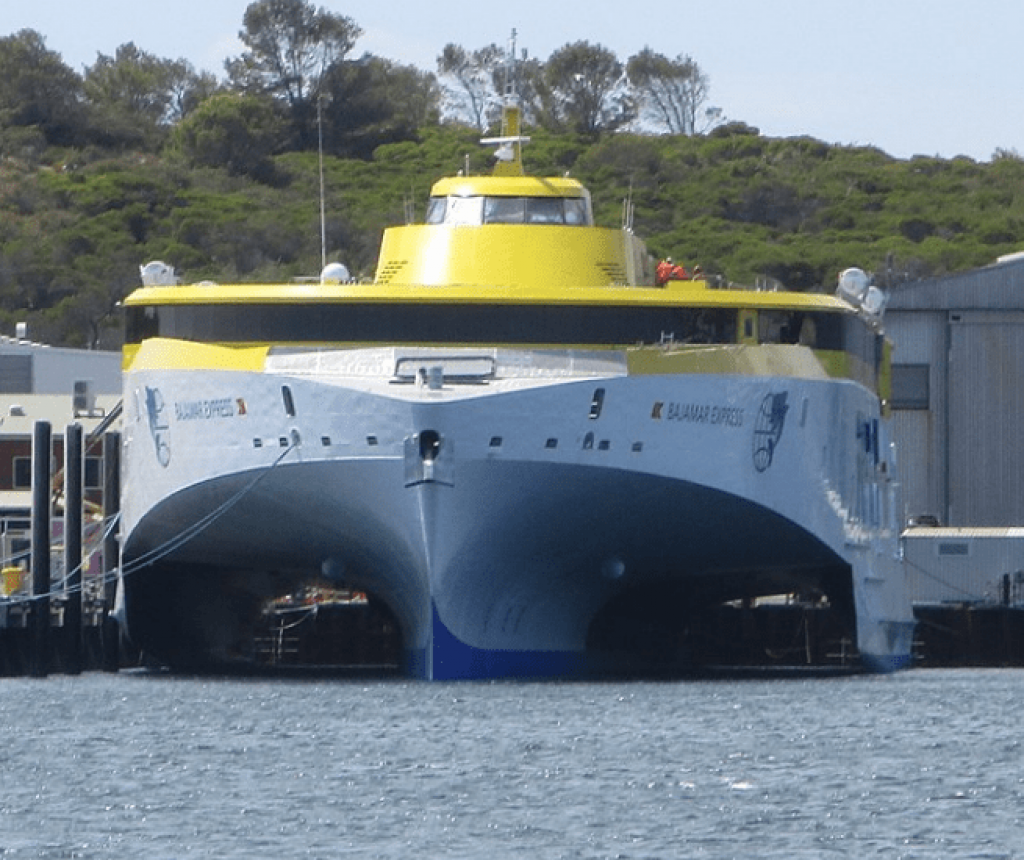
You also have these ferries in the British Isles, including from Stranraer to Belfast and ferries from England to the Channel Islands. Since these often change locations, it is difficult to pin them to one location or connection.
You also recently have more of these High-Speed ferries available around Greece.
The Largest Catamaran Ferry

The largest diesel-powered catamaran ferry is the HSC Express 1 and 2 between Aarhus and Odden (as well as Rønne and Ystad) in Denmark. More information about this catamaran can be found here on Wikipedia . The newer variants of this Ferry. For example, the HSC Express 3 is slightly smaller, so it may well be the case that these will remain the fastest and largest catamarans in the world for a very long time.
UPDATE: By the way, the Express 5 will eventually become the largest.
Sometimes you hear that the Hodor pleasure yacht ( Astilleros Armon ) is the largest catamaran with 60 meters, but this is incorrect. It is much smaller than the HSC Express at 112.6 meters .
Images of the highest-speed Catamarans in the world

Use our ferry guides and maps

Kangaroo Island
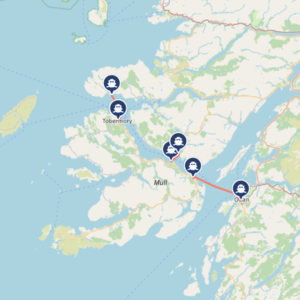
Ferry to Portugal from Ireland
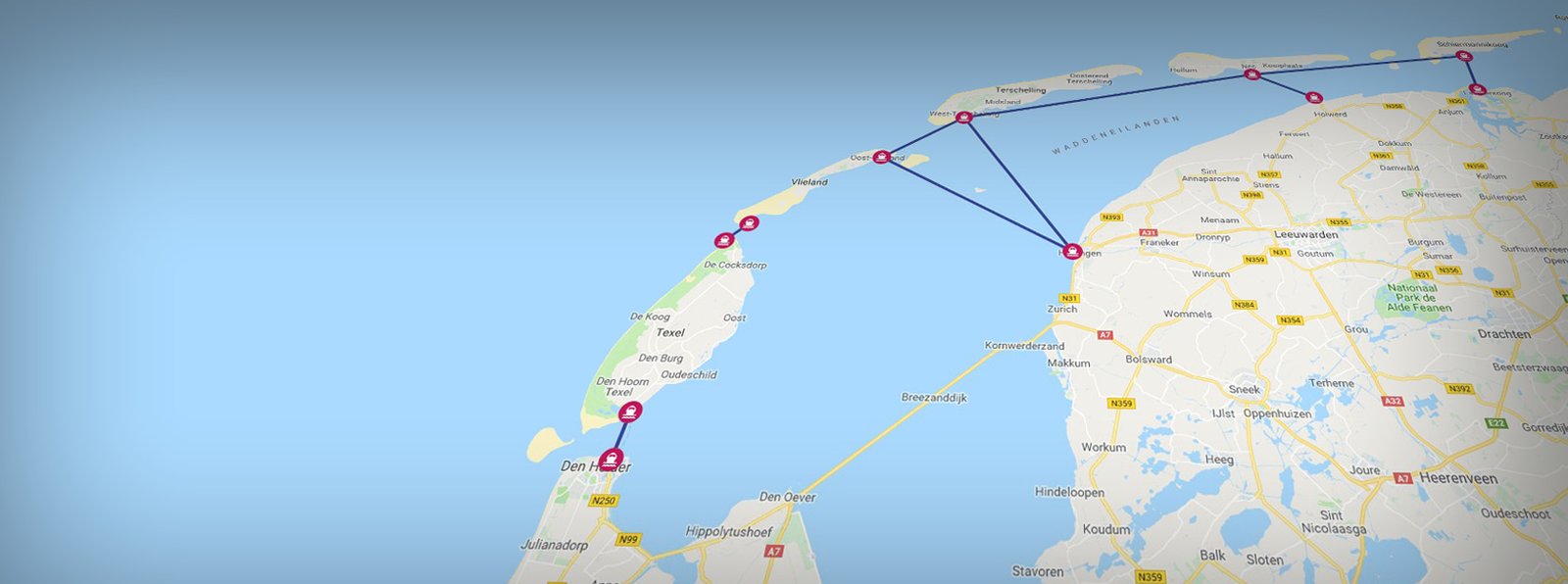
Island hopping through the Dutch Wadden islands
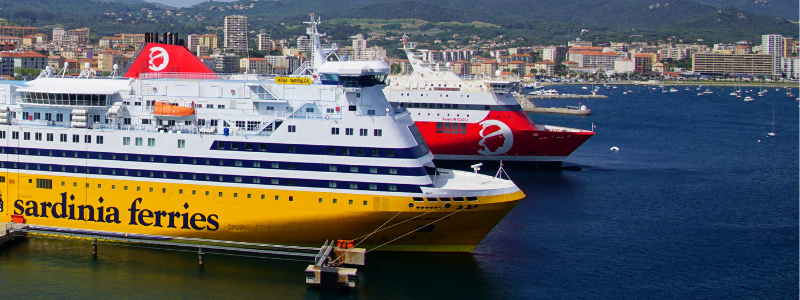
Top 20 EU Passenger Transport Countries
Tags: Africa Global South America
The editorial team at FerryGoGo writes travel guides and creates route ideas for ferry travel, along with everything else that might be of interest to travelers and tourists.

- Ferries and Dogs: The Complete Guide
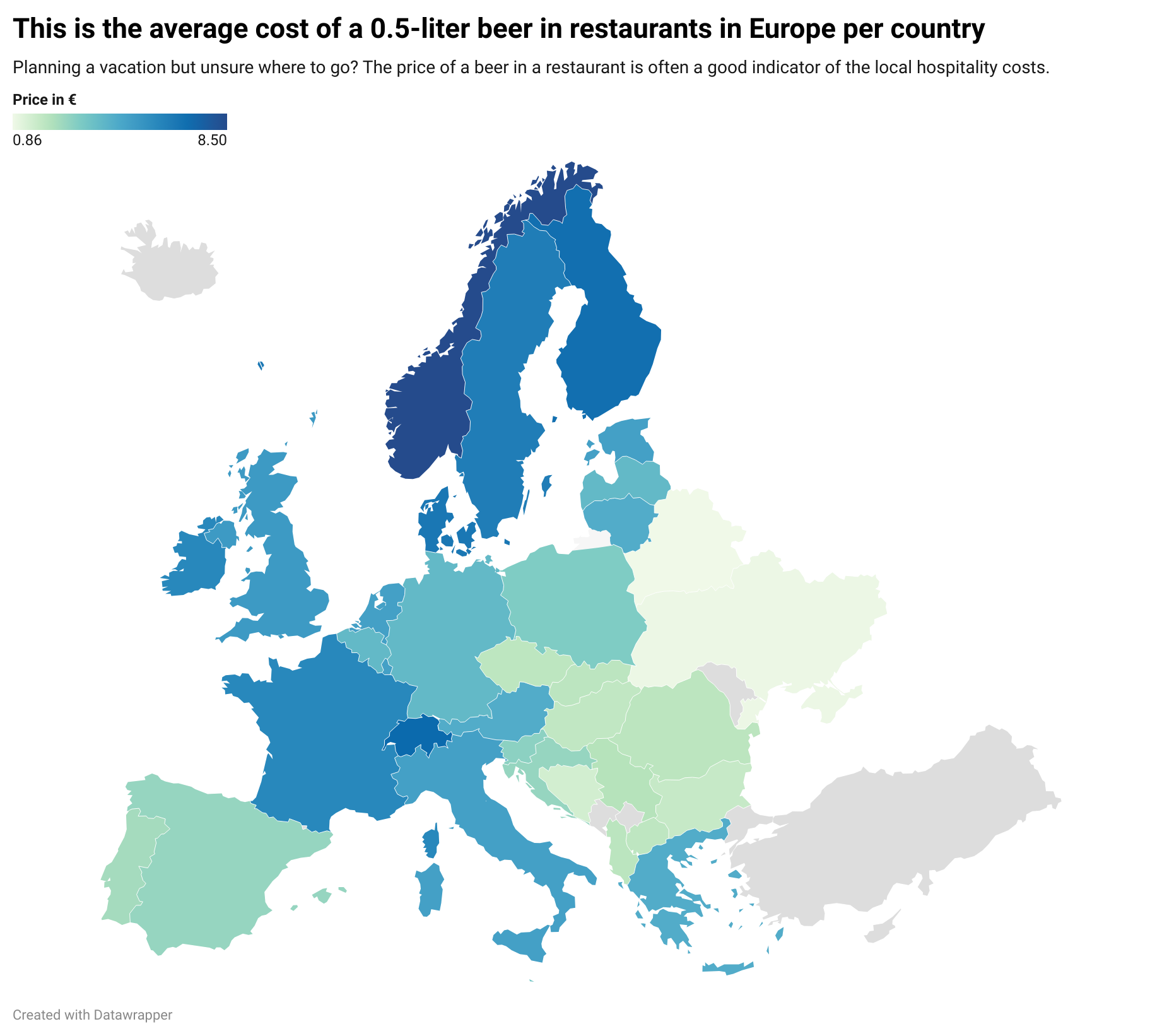
- This is the cost of a beer across Europe
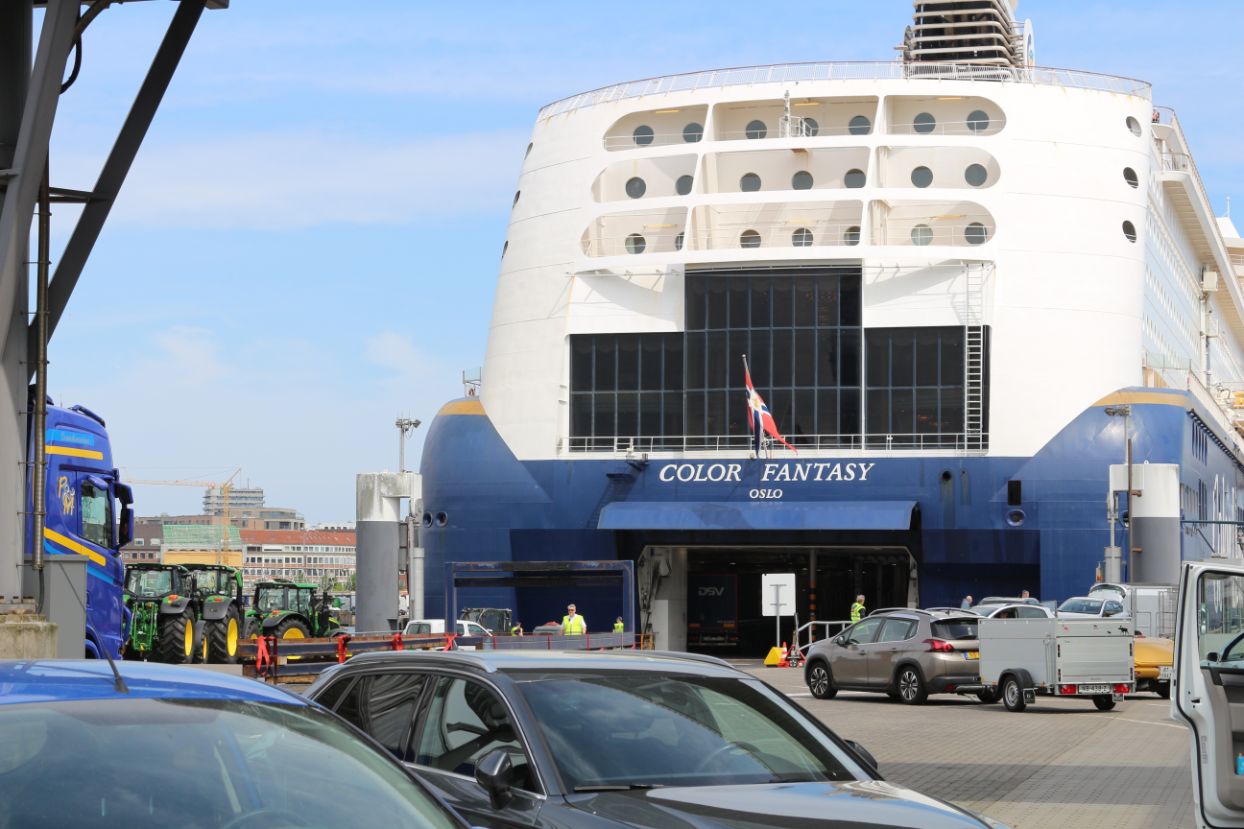
- Significant Drop (-22%) in Rental Car Prices Across Europe
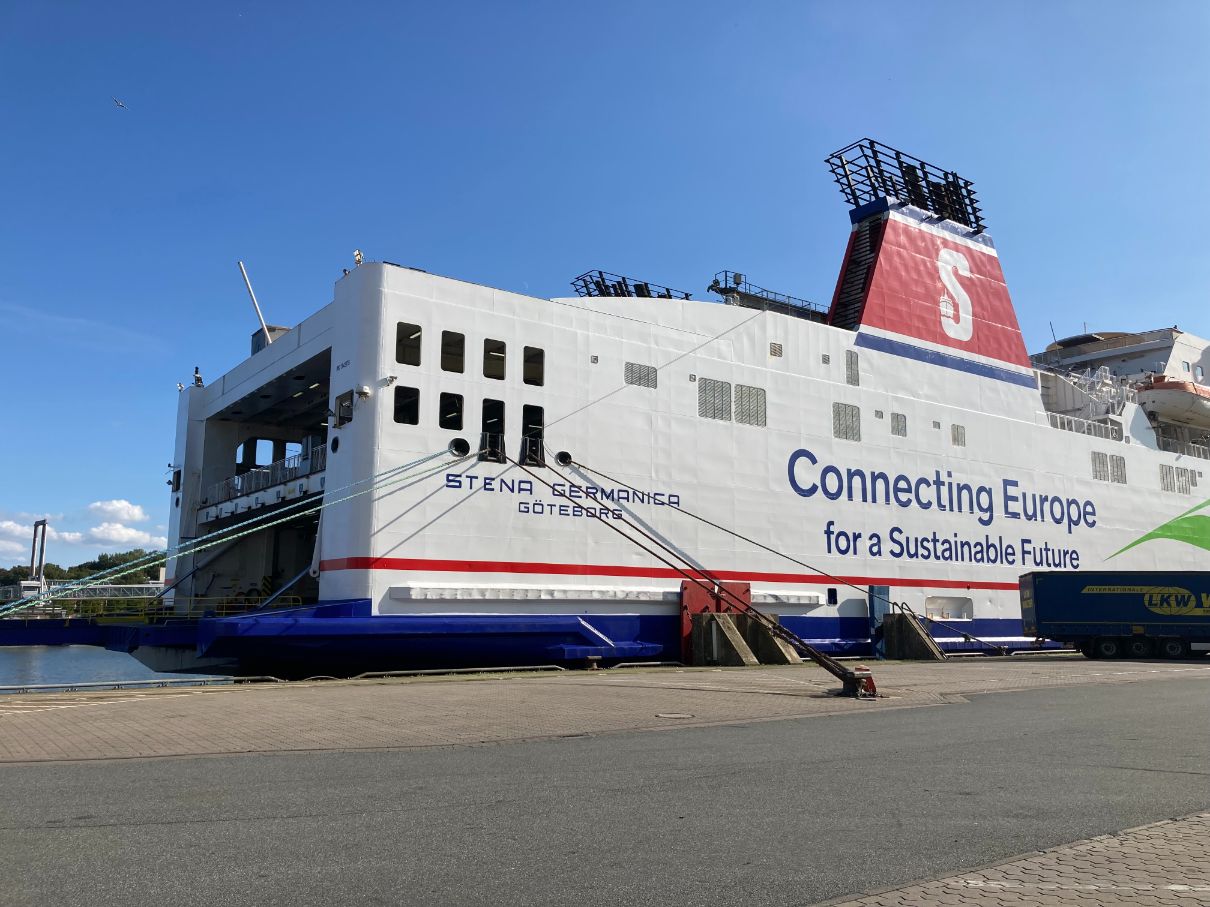
- This is what you’ll spend this summer on a ferry crossing.
The Bajamar Express is a beauty, love to see more of these catamaran ferries in Europe!
The White Blue ferry is the Iris 6.1 Catamaran Passenger Ferry. I think the project failed:
” The philosophy underpinning the design concept was the need to achieve three important targets. Most importantly, it had to be able to transport passengers in comfort. In order to impose a mimimal environmental impact on ports, estuaries and banks, it had to generate a low wake at all operational speeds. Lastly, it had to meet these standards without negatively influencing the hull form, which was designed to maximise speed and economy.”
The ferry is still active somewhere in Croatia. When you spot it let us know 🙂
Leave a reply Cancel reply
Save my name, email, and website in this browser for the next time I comment.
Smooth sailing with the FerryGoGo ferry guides to your dream destinations. Discover the perfect ferry routes with our interactive maps and essential travel insights.
About | Contact | Disclaimer | Privacy & cookies
🌐 Deutsch 🌐 Dutch
At FerryGoGo, we aim to make ferry travel accessible and straightforward for everyone. By offering practical information on ferry routes, guides, and alternatives, we help you make the best choice for your journey, whether you prioritize comfort or speed. Discover the ferry routes that best suit your preferences and needs with FerryGoGo.
- Ferries to Spain
- UK to Norway ferry (Indirect)
- Ferries to France from the UK / England
- Ferries to Ireland (from the UK)
- Avoid Seasickness
- #1 Alaska Interactive Map
- To Portugal ! (from UK)
- To Spain from England
- Ferries to the Netherlands
- Dover Calais Ferries
- Below Deck Filming Locations – on a budget by ferry
- Price of a ferry crossing, a beer and a bratwurst during EURO 2024.
- Historic ferry crossings from the UK to Scandinavia
- Project Brave: New Ferry Rosyth-Dunkirk
- Follow us on 𝕏


Catamaran Hull Speed Calculator For Beginners (Table and Free Spreadsheet)

As an Amazon Associate, we earn from qualifying purchases. We may also earn commissions if you purchase products from other retailers after clicking on a link from our site.
Speed is important, it can get you out of harm’s way, and it makes sailing much more fun, but figuring out how fast a catamaran will be able to sail can be tricky. One important aspect is to understand maximum hull speed.
In this article, I have calculated different hull speeds for different lengths of boats; this includes both monohulls and catamarans but focuses on the latter. Here is the catamaran maximum hull speed table:
Table of Contents
Catamaran Max Hull Speed Calculator Table
| Length on Water | Displacement Max Hull Speed | Semi Planing Beyond Max Hull Speed | |||
| 0% | 10% | 20% | 30% | ||
| Feet | Meter | Knots | Knots | Knots | Knots |
| 26 | 8 | 6.9 | 7.5 | 9.1 | 11.8 |
| 30 | 9 | 7.3 | 8.0 | 9.6 | 12.5 |
| 33 | 10 | 7.7 | 8.4 | 10.1 | 13.2 |
| 36 | 11 | 8.0 | 8.8 | 10.6 | 13.8 |
| 39 | 12 | 8.4 | 9.2 | 11.1 | 14.4 |
| 43 | 13 | 8.7 | 9.6 | 11.5 | 15.0 |
| 46 | 14 | 9.1 | 10.0 | 12.0 | 15.6 |
| 49 | 15 | 9.4 | 10.3 | 12.4 | 16.1 |
| 52 | 16 | 9.7 | 10.7 | 12.8 | 16.6 |
| 56 | 17 | 10.0 | 11.0 | 13.2 | 17.2 |
| 59 | 18 | 10.3 | 11.3 | 13.6 | 17.7 |
| 62 | 19 | 10.6 | 11.6 | 14.0 | 18.1 |
| 66 | 20 | 10.8 | 11.9 | 14.3 | 18.6 |
| 69 | 21 | 11.1 | 12.2 | 14.7 | 19.1 |
| 72 | 22 | 11.4 | 12.5 | 15.0 | 19.5 |
| 75 | 23 | 11.6 | 12.8 | 15.3 | 20.0 |
| 79 | 24 | 11.9 | 13.1 | 15.7 | 20.4 |
| 82 | 25 | 12.1 | 13.3 | 16.0 | 20.8 |
| 85 | 26 | 12.4 | 13.6 | 16.3 | 21.2 |
Table Explanation
- Length on the waterline (L.W.L.): Length of the boat when measured on the waterline, not to be confused with length overall (L.O.A.), which is the boat’s total length (above the waterline) including bowsprit, etc.
- Displacement max hull speed: The max speed of a boat whose L.W.L doesn’t change when underway and where the vessel’s bow wave is the limiting speed factor.
- Semi/Light Displacement or Semi planing hulls speed: A boat where the bow waves speed limiting factors can be partially overcome and therefore exceed the displacement hull speed. These hulls usually overcome hull speed by 10-30% .
How to use the Catamaran Hulls Speed Table
- Choose your length on waterline in the left-most column, either in feet or meter.
- Continue reading to your right and stop either at “Displacement hulls speed” or continue to “10,20, or 30%”, depending on your estimated hull efficiency. This will be your calculated maximum hull speed for a semi-displacement catamaran.
The Formula
First of all, we need to know the maximum hull speed for a displacement hull, and from that number, we will be able to calculate how much faster the semi-planing (or semi-displacement) hull will be. This is the formula for Maximum Hull Speed on a displacement boat:
Now we need to add the increased efficiency (loss of drag) of a semi-displacement hull, usually, this is somewhere between a 10-30% increase.
Note: “1.3” is the increase in efficiency, if you believe you are on the lower end of the scale this would be 1.2 or 1.1.
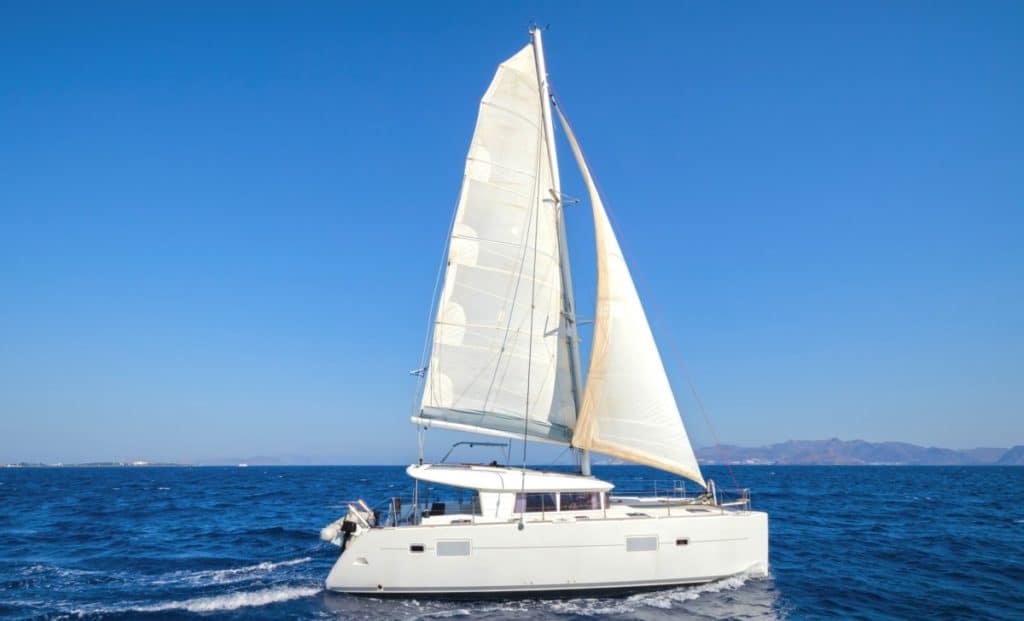
How to Exceed Hull Speed
This calculator offers a theoretical perspective, but many other factors such as sail plan, weight, and sailor skill, of course, have a profound impact on speed. As we have seen, a semi-displacement hull can exceed maximum hull speed, but we can also see that it isn’t by much. The next step is to reduce drag even further by utilizing a planning hull.
Catamaran Hull Speed Spreadsheet
If you want more info, calculate other lengths, or see the speeds in Km/h or Mph then I suggest you check out this free spreadsheet.
Catamaran Freedom Hull Speed Calculator
Note: If you want your own copy just click, File->make a copy.
Common Questions About Catamaran Hull Design
Below I will answer some of the questions I receive concerning catamaran hull design. The list will be updated as relevant questions come in.
Is a Catamaran a Planing hull?
As we have discussed above, a catamaran can definitely have a semi-planing hull, but can it be designed in a fully planing configuration as well?
Catamarans can be configured as planing hulls, although most sailing catamarans are set up as either semi-planing or hydrofoil. Due to the high speeds needed to get a boat to planing speed, this is only possible on racing sailboats or motor-powered catamarans such as high-speed ferries.
Owner of CatamaranFreedom.com. A minimalist that has lived in a caravan in Sweden, 35ft Monohull in the Bahamas, and right now in his self-built Van. He just started the next adventure, to circumnavigate the world on a Catamaran!
Leave a Reply Cancel reply
Your email address will not be published. Required fields are marked *
Save my name and email in this browser for the next time I comment.
Recent Posts
Must-Have Boat Gear for Catamaran Sailors!
Sailing is probably the most gear-intensive activity I've ever done; there are so many decisions to be made about what gear to buy now, for tomorrow, and what to definitely never buy. The gear on...
6 Best Trailerable Trimarans For Bluewater and Coastal Sailing
Having a boat costs a lot of money, even when you are not using it, marina fees, etc. And once it is in the water most sailors never go very far from their "home marina" and sailing will be somewhat...
- Ethics & Leadership
- Fact-Checking
- Media Literacy
- The Craig Newmark Center
- Reporting & Editing
- Ethics & Trust
- Tech & Tools
- Business & Work
- Educators & Students
- Training Catalog
- Custom Teaching
- For ACES Members
- All Categories
- Broadcast & Visual Journalism
- Fact-Checking & Media Literacy
- In-newsroom
- Memphis, Tenn.
- Minneapolis, Minn.
- St. Petersburg, Fla.
- Washington, D.C.
- Poynter ACES Introductory Certificate in Editing
- Poynter ACES Intermediate Certificate in Editing
- Ethics Training
- Ethics Articles
- Get Ethics Advice
- Fact-Checking Articles
- IFCN Grants
- International Fact-Checking Day
- Teen Fact-Checking Network
- International
- Media Literacy Training
- MediaWise Resources
- Ambassadors
- MediaWise in the News
Support responsible news and fact-based information today!
Fact check: What the Obamas and other Democratic speakers got right, wrong on Day 2 of the DNC
Former president barack obama and former first lady michelle obama energized convention attendees. here are some fact checks of their claims..

CHICAGO — Two decades after exploding onto the political scene at a different Democratic convention, former President Barack Obama, along with former first lady Michelle Obama, energized convention attendees here. The Obamas bestowed their support on nominee Kamala Harris, who aims to follow Obama as the nation’s second Black president.
Barack Obama began his address by praising outgoing President Joe Biden. “I am proud to call him my president, but I am even prouder to call him my friend,” Obama said of Biden, his former vice president.
Obama attacked Harris’ opponent, former President Donald Trump with zingers, once needling Trump for a “ weird obsession with crowd sizes ” (which also involved a suggestive hand gesture).
Barack Obama offered a few notes that rhymed with his career-making 2004 keynote address at the Democratic convention in Boston, in which he argued against the idea that there is a blue America and a red America.
Michelle Obama’s speech also offered some optimistic notes, including the notion that “hope is making a comeback” with Harris’ late entry into the presidential race as Biden’s would-be successor. But the former first lady’s remarks were sometimes even more acerbic than her husband’s.
She said, for example, that Trump had benefited from the “affirmative action of generational wealth” yet still managed to get “a second, third or fourth chance” while regularly “whining” or “cheating.” She also criticized Trump — an early spreader of the “birther” conspiracy theory that doubted that Obama was born in the U.S. — for having made Americans “fear us” as an educated, high-achieving couple who “happen to be Black.”
PolitiFact fact-checks politicians across the political spectrum. We also fact-checked the Republican National Convention in July. Read more about our process.
Here are some fact-checks of claims made during the convention’s second night.
Barack Obama: Under Joe Biden, the U.S. produced “15 million jobs, higher wages, lower health care costs.”
He’s right about jobs: The U.S. has added 15.8 million jobs since January 2021, when Biden was sworn in, though some of those represented the workforce return of workers the pandemic had sidelined.
Wages are up under Biden without factoring in inflation. But for his full tenure, wages have trailed inflation , which hit a four-decade high under Biden. Nevertheless, wages have outpaced inflation over the past two years, the past year and compared with before the pandemic.
Whether health care costs were lower overall is a trickier question, because there’s great variation from family to family and person to person. However, U.S. health care expenditures as a percentage of gross domestic product peaked during the pandemic in 2020 and have since fallen roughly to prepandemic levels. This represented the biggest sustained decline in decades.
Sen. Bernie Sanders, I-Vt.: “Unemployment was soaring” when Biden and Harris took office in January 2021.
Mostly False.
Sanders overstated the unemployment situation when Biden and Harris were inaugurated.
In April 2020, at the start of the COVID-19 pandemic, the unemployment rate surged to 14.8% as millions of Americans lost their jobs.
But by the time Biden took office in January 2021, the rate had fallen to 6.4%, and it continued to fall that year.
So it wasn’t “soaring” any longer, though the rate was still high by historical standards. It was lower than 6.4% for about six years prepandemic.
July’s unemployment rate is 4.3%.
Project 2025
Pennsylvania state Rep. Malcolm Kenyatta, D-Philadelphia: “And on Page 587, Project 2025 would cut overtime pay for hardworking Americans.”
Labor law experts have told PolitiFact that the Project 2025 plan would not eliminate overtime pay, but some workers could lose overtime protections if the plan’s proposals are enacted. It’s hard to say how many; it would depend on what’s enacted.
The document proposes that the Labor Department maintain an overtime threshold “that does not punish businesses in lower-cost regions (e.g., the southeast United States).” This threshold is the amount of money executive, administrative or professional employees need to make for an employer to exempt them from overtime pay under the Fair Labor Standards Act.
In 2019, the Trump administration finalized a rule that expanded overtime pay eligibility to most salaried workers earning less than about $35,568. The Biden administration raised that threshold to $43,888 beginning July 1, and that will rise to $58,656 on Jan. 1, 2025.
Project 2025’s proposal would return to the Trump-era threshold in some parts of the country. It’s unclear how many workers that would affect, but experts said some would presumably lose the right to overtime wages.
Other proposals in the plan include allowing some workers to choose to accumulate paid time off instead of overtime pay, to work more hours in one week and fewer in the next rather than receive overtime,,and require employers to pay overtime for working on the Sabbath.
Former first lady Michelle Obama: One of Trump’s proposals is “shutting down the Department of Education.”
Trump has said he would abolish the Education Department , a proposal he shares with Project 2025 , an agenda independently produced by some Trump allies.
It’s also something conservative groups have pushed for decades. The idea is to save a few essential functions and hand them to other agencies.
Trump’s education agenda also includes universal school choice, not spending federal dollars on schools that have vaccine mandates, allowing prayer in school, making principals directly elected by voters, subsidizing homeschooling and abolishing tenure for K-12 teachers.
Health Care
Sen. Chuck Schumer, D-N.Y.: “Democrats lowered prescription drug prices.”
Mostly True.
The Democrats did take historic steps to lower prices for Medicare recipients, but that’s a limited group of people and for many drugs that will take time.
In August 2022, Biden signed the Inflation Reduction Act, which allows the federal government to negotiate prices with drugmakers for Medicare. It passed without Republican support. The same law capped the monthly price of insulin at $35 for Medicare enrollees starting in 2023.
The Biden-Harris administration announced Aug. 15 that the federal government had reached agreements with all participating manufacturers on new negotiated drug prices for the first 10 drugs selected under the new law.
That will define the prices to be paid for prescriptions starting in 2026. For 2027 and 2028, 15 more drugs per year will be chosen for price negotiations. Starting in 2029, 20 more will be chosen a year.
New Mexico Gov. Michelle Lujan Grisham: Donald Trump and J.D. Vance want to “repeal the Affordable Care Act.”
Half True .
Trump’s new position doesn’t match his old one, but more details are needed.
In 2016, Trump campaigned on a promise to repeal and replace the Affordable Care Act. As president, Trump supported a failed effort to do just that. In the years since, he has repeatedly stated his intent to dismantle the health care law, including in campaign stops and social media posts throughout 2023.
In March, however, Trump walked back this stance. He wrote on Truth Social that he “isn’t running to terminate” the ACA but to make it “better” and “less expensive.”
Trump hasn’t said how he would do this, and health care policy experts said it’s difficult to know where he stands without a detailed plan. Experts identified an array of possible changes that could be executed under another Trump administration but said a sweeping repeal likely isn’t in the cards given a lack of political support.
Childhood Poverty
Sanders: “We cut childhood poverty by over 40% through an expanded child tax credit.”
Biden’s American Rescue Plan increased the child tax credit from $2,000 to $3,600 for children younger than 6 and to $3,000 for children 6 to 17.
We previously reported that supplemental poverty numbers showed poverty among all U.S. children dropped from 9.7% in 2020 to 5.2% in 2021, the Census Bureau said — a decline of 46%. About 5.3 million people were lifted out of poverty, including 2.9 million children.
The provision lapsed after December 2021, facing opposition from Republicans and Sen. Joe Manchin, now an independent, who argued that expanding the credit would worsen inflation.
When the expanded tax credit expired, supplemental child poverty spiked , rising from 12.1% in December 2021 to 17% in January 2022 — a 41% change.
Kamala Harris in a DNC video: Trump “wants to impose what is in effect a national sales tax on everyday products and basic necessities that we import from other countries. … (it) would cost a typical family $3,900 a year.”
Trump has said that he would propose a 10% tariff on all nondomestic goods sold in the U.S. Although tariffs are levied separately from taxes, economists say that much of their impact would be passed along to consumers, making them analogous to a tax.
The video’s figure about how much it will cost families is higher than current estimates.
The American Action Forum, a center-right think tank, has projected additional costs per household of $1,700 to $2,350 annually.
The Peterson Institute of International Economics, another Washington, D.C.-based think tank, projected that such tariffs would cost a middle-income household about $1,700 extra each year.
PolitiFact chief correspondent Louis Jacobson, senior correspondent Amy Sherman, staff writers Samantha Putterman, Sara Swann, Loreben Tuquero and Maria Ramirez Uribe contributed to this story.
Our convention fact-checks rely on both new and previously reported work. We link to past work whenever possible. In some cases, a fact-check rating may be different tonight than in past versions. In those cases, either details of what the candidate said, or how the candidate said it, differed enough that we evaluated it anew.
This fact check was originally published by PolitiFact , which is part of the Poynter Institute.

Opinion | Media reaction to Kamala Harris’ acceptance speech
It was a speech that wowed not only the obviously partisan crowd in Chicago, but many of the media commentators covering it.

Fact check: How accurate was Kamala Harris’ 2024 DNC speech in Chicago?
Harris leaned into several key policy themes: abortion rights, voting rights and support for Ukraine as it fights a continuing Russian invasion

LIVE: Fact-checking Kamala Harris’ 2024 DNC speech in Chicago
PolitiFact is live fact-checking the fourth and final night of the 2024 Democratic National Convention

Opinion | Who has been the DNC’s most surprising speaker so far?
It’s Stephanie Grisham, a former White House press secretary for Donald Trump who now supports Kamala Harris for president

Fact check: What Walz, Buttigieg, Clinton and others got right and wrong at Day 3 of the DNC
Minnesota Gov. Tim Walz accepted his party’s vice presidential nomination on the Democratic convention’s third night
You must be logged in to post a comment.
This site uses Akismet to reduce spam. Learn how your comment data is processed .
Start your day informed and inspired.
Get the Poynter newsletter that's right for you.
Michelle Obama's DNC Comments Sparked Extra Attention to the Obamas' Many Luxury Homes
The former first family resides in multiple homes across various area codes.
Published Aug. 22 2024, 10:30 a.m. ET
Former First Lady Michelle Obama ruffled a few feathers after she discussed her and Barack Obama 's wealth at the Democratic National Convention in August 2024.
After Michelle shared how her parents "didn't aspire to be wealthy," some social media users called her a hypocrite due to her and Barack's lavish homes.
How many homes do the Obamas own?
The Obamas own three homes: one in Kalorama, Wash., one in the historic Oak Bluffs in Martha's Vineyard, Mass., and one in Chicago's Kenwood suburbs. According to Celebrity Net Worth , they bought the Kalorama home for $8.1 million in 2019, followed by their $11.75 million Martha's Vineyard home in 2019. Their Kenwood, Ill. home , which the Obamas purchased before Barack's presidency, is worth $1.6 million.
Extra attention was put on the Obamas' homes after Michelle's speech highlighted how, though she and current Vice President and presidential nominee Kamala Harris's mothers were "an ocean apart," they instilled similar values regarding working hard. She also shared that her mother and father "were suspicious of folks who took more than they needed."
Michelle's sentiments upset many people watching the DNC, including X (formerly Twitter) user @leslibliss, who scolded her and Barack for owning multiple homes.
"The Obamas have a net worth of $70 million," the user said. "They own four luxurious properties. Getting really tired of multi-millionaires preaching about the evils of money and greed."
The X user also listed several homes with the price tag attached to each. While some of the homes' prices were accurate, the user's listing of their rumored Oahu, Hawaii property hasn't been confirmed.
The Obama’s have a net worth of $70 million. They own 4 luxurious properties: - Washington DC home bought for $8.1M - Martha’s Vineyard home bought for $11.75M - Beachfront home in Hawaii bought for $8.7M - Chicago home bought for $1.65M Getting really tired of… pic.twitter.com/sNwPVfmRSt — 🇺🇸ProudArmyBrat (@leslibless) August 21, 2024
Where do the Obamas live?
The Obamas split their time between their two properties in Washington and Martha's Vineyard. While they still own their Kenwood home, they haven't returned to the residence since Barack left office in 2017, and it's now a tourist attraction. In her DNC speech, Michelle stated the last time she was in Chicago was to memorialize her mother, Marian Robinson, who died in May 2024.
Joe Biden's Youngest Daughter Ashley Introduced Him as an "OG Girl Dad"
Jesse Jackson's Health Struggles: A Closer Look at His Battle with Parkinson's
Rumors of AOC's Staggeringly High Net Worth Couldn't be More Inaccurate
Latest Politics News and Updates
- About Distractify
- Privacy Policy
- Terms of Use
- Connect with Distractify
- Link to Facebook
- Link to Instagram
- Contact us by Email
Opt-out of personalized ads
© Copyright 2024 Engrost, Inc. Distractify is a registered trademark. All Rights Reserved. People may receive compensation for some links to products and services on this website. Offers may be subject to change without notice.

IMAGES
COMMENTS
Cruising catamarans are some of the most comfortable boats to roam the water, making them fantastic for both long-term voyages and short-term vacations. Still, cruising catamarans can be great racing boats, but just how fast can they go?
August 30, 2022. Catamarans are known for their speed, and some vessels are fast enough to break world sailing speed records. Catamarans can go between 15 and 30 knots, with the fastest achieving speeds well in excess of 60 knots. Sailing catamarans are sometimes twice as fast as monohulls and cut through the water with greater efficiency.
How Fast Are Catamarans Compared To Other Boat Types? Sailing catamarans typically average about 10 knots. Pontoon boats average about 20 mph. A powerboat cruiser can average anywhere between 30 and 50 mph. Cigarette boats can even reach close to 90 mph in the proper conditions. Sailboats average between 6 and 12 mph depending on wind conditions. This includes mono-hull between 6 to 8 mph and ...
How fast a catamaran can go also depends on the load it is carrying, its structural design, and its engine power. This article explores details of what affects a cruising catamaran's speed. It also considers how fast sailing and power cruising catamarans can go, along with some of the most rapid cruising catamaran models available today.
F50 catamarans used in the "Formula One"of sailing can travel at up to 50 knots.
The Fastest Cruising Catamarans Currently on the Market. The world of luxurious and high-performance catamarans is probably mostly dominated by Gunboat and HH Catamarans leading the way. Gunboat's 68ft, 72ft, and 80ft models excel with speeds over 30 knots, thanks to cutting-edge materials and construction techniques.
These fast boats are ideal for racing and long cruising vacations. But with the numerous brands and models on the market, how do you know which is the best one? The best high-speed performance cruising catamarans are the Outremer 4x, McConaghy MC50, Nautitech 44, Gunboat 62, Balance 526, and Marsaudon Composites ORC50.
How fast can catamarans go? The speed a catamaran can go is entirely dependent upon the hull design, weight of the vessel, the strength of propulsion (be it wind or powered) and so on.
Catamarans are multi-hull vessels composed of two hulls. This geometry allows them to be balanced on water and in turn gain a great deal of speed. Compared to single-hull boats, catamarans are regarded as much faster. But how fast are catamarans actually?
Sailing catamarans come in all different shapes and sizes. Some are optimized for living space and comfort, while others are designed with fast cruising speeds being the sole goal of the boat. The Gunboat 68, one of the fastest cruising sailboats currently made, can exceed 30 knots.
The F50 is an awe-inspiring racing machine capable of reaching speeds up to 50 knots (60mph/100kph). The team who designed and built the fleet explains what ...
Sailors and those interested in sailing are drawn to catamarans for various reasons, and speed is one of them. These boats are renowned for their swiftness, and there are numerous brands and boat designs that make the most of this quality. Designers are always pushing the limits and questioning just how fast a catamaran can go. | Fastest Catamarans for Cruising | #cruisingcatamaran #catamarans ...
This catamaran costs 5.5 million euros. These are the top five fastest cruising catamarans of 2020 according to us. Other impressive cruising multihulls include the Dolphin 42, Privilege 435, Fountaine Pajot Belize 43, Nautitech 44, Lagoon 440, Voyage 44, Outremer 45, Prout 45, and Leopard 45. Explore their features and more catamaran ...
For many, high performance boats are the most fun way to experience the water. Often referred to as go-fast boats or speed boats, these vessels embody the pinnacle of marine engineering, offering unparalleled speed, agility, and power on the water. Designed with sleek, aerodynamic lines and equipped with high-powered engines, these boats are ...
Disruptive, innovative, and contemporary in style and technology, this electrified HH44 takes fast multihull cruising to a new level, says Toby Hodges
With a powerful, versatile sail plan—as well as light, solid construction and go-fast daggerboards—the Balance 482 is a go-anywhere cat that puts a premium on performing, which made it the perfect choice as Best Performance Catamaran in the 2022 Boat of the Year contest.
Cruising Catamarans Performance The dealer in the video our client mentioned to us specifically focused on the superior performance of the Fountaine Pajot compared to some of the competing brands in the cruising category like Leopard Catamarans, Nautitech Catamarans, Bali Catamarans, Lagoon Catamarans, and Catana Catamarans.
In most aspects, sailing a catamaran is very similar to sailing a monohull. If you learn to sail on a monohull then most of the skills are transferable. But, there are a couple of subtle differences that we will analyze further in this article. A catamaran is generally more balanced on the water and can be faster than a multi-hull vessel. And, cruising on a sailboat with a cat hull will be ...
High-Performance Speed Boats: The Ultimate Guide. Written by: Brett Becker on March 4, 2024. The greatest powerboats in the world - those that inspire movies and movie stars, the boats that are the most fun to drive, the boats that invite clusters of onlookers at the docks - are high-performance speed boats. Go-fast boats are the stuff of ...
All you need to know if you want to learn more about the fastest and newest high speed catamaran ferries. Very fast ferries!
Speed is important, it can get you out of harm's way, and it makes sailing much more fun, but figuring out how fast a catamaran will be able to sail can be tricky. One important aspect is to understand maximum hull speed.
So, how fast are catamarans? The ability to power over the "hump" of the drag curve and into the phase of surfing where the hull starts to "plane" and is released from the restriction of it's hull speed in displacement mode. It doesn't really plane as a speed boat does, but it is lifted dynamically, the hulls draw less and start ...
Today's most popular go-fast catamarans range from 28 to 52 feet. Powered by twin inboard engines up to 1,750-HP, they can reach 180 MPH and beyond. Once again, it goes without saying—but still needs to be said—that boats in this rather extreme category take years of experience to learn to handle safely.
The Gunboat 57 is a powerful sailing catamaran with stylishly comfortable accommodations and an ...[+] indoor helm station Rachel Fallon-Langdon. In fact, the indoor/outdoor living aboard Vai Vai ...
Emergency workers in southern Italy are still hunting for six people missing after a tornado sank a luxury yacht early Monday - prompting an air and naval operation off the coast of Sicily.
Former President Barack Obama gestures as he finishes speaking at the Democratic National Convention on Tuesday, Aug. 20, 2024, in Chicago. (AP Photo/J. Scott Applewhite)
Extra attention was put on the Obamas' homes after Michelle's speech highlighted how, though she and current Vice President and presidential nominee Kamala Harris's mothers were "an ocean apart," they instilled similar values regarding working hard. She also shared that her mother and father "were suspicious of folks who took more than they needed."
10 likes, 0 comments - scootfastcruisesofficial_ on August 18, 2024: "Welcome Back Catamaran Scoot Fast Cruises Experience the thrill of the ocean and the joy of exploration. ️ #SailingAdventure #WaterSports #ExploreTheWorld #balisanur #fastcruisesanur #fastcruisesbali".